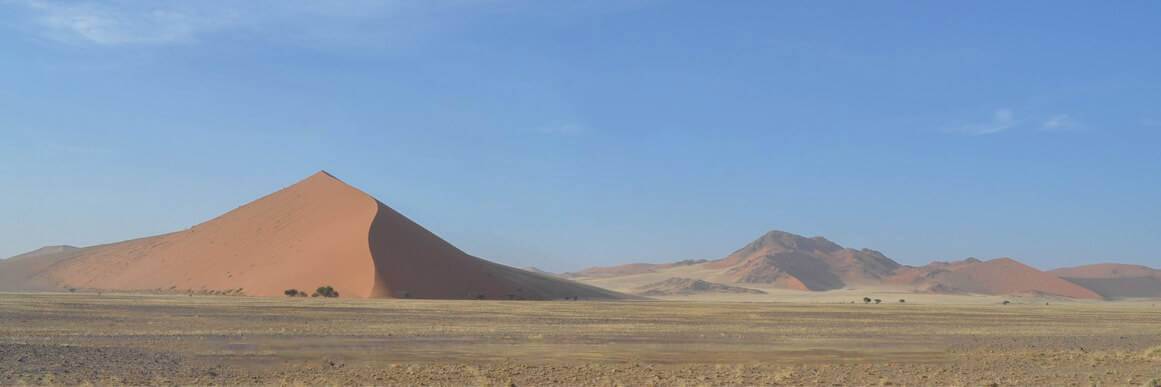

BIRDING TOURS WORLDWIDE
Welcome to Birding Ecotours! Here we will present to you some of the world’s most spectacular birding tours around the world. Our trips are for small groups of only 6-8 participants. Quality is of paramount importance to us; we prefer to use superior accommodation (where available at the top birding sites) and vehicles. Despite our focus on small groups and the fact that we err on the side of superior quality, our prices are competitive. It is Birding Ecotours’ company policy to contribute a minimum of 10 % of profits to conservation and local communities. We are passionate about birding and also about leaving a legacy – by genuinely helping people and conserving birds – for generations to come.
We like to do things differently. For example, we offer some unique tours in addition to our standard birdwatching tours, including Owls of the World® tours , tough mammal tours (fancy an Aardvark or a Black-footed Cat?), and more. Since 2003, we have been innovating some of the most wonderful bird and wildlife tours available.
What is one of our typical birding tours like?
Our main focus is, of course, on finding the important birds (especially the endemics and specials). Our trip lists are very important to us (we do really encourage you to look at our trip reports – which contain bird and mammal lists – and compare them with those of other companies). However, we understand that birding tours can be tiring, so we as a company prefer to add a day or two and actually have folks enjoy the birding tour – this allows us to accumulate a big bird list (including backup time for finding the most important birds), but it also gives us time to enjoy the bird sightings, as well as to stop for each species of mammal (plus other interesting things we may encounter along the way) rather than to be forced to tell our guests “sorry, we have no time to stop for anything without feathers” – that can be frustrating. Hence, we tend to add a couple of days so we can get the best bird lists in the industry, but without as much of a huge rush as some other companies’ bird tours. As just one example, we must have the most comprehensive eastern South Africa birding tour out there (by the way, so many mammals are also seen on this trip, incidentally to the birding).
We also run a good number of Birding Photo Tours , which need a different approach from typical birding tours – more space in the vehicles for camera gear, the correct tour pace to get photos, making sure the vehicle is at the right angle, and constantly thinking about lighting (although these things are important even on a standard birding tour, they are even more vital on a photographic birding/wildlife vacation). We also operate various other kinds of tours such as birding and wildlife cruise holidays , pelagic trips and 1-day birding tours . Our main focus, of course, is on birding tours !
One of the things we pride ourselves in the most, though, is our enthusiasm which means we get back to you with excitement from the minute you contact us. We tend to struggle to contain our enthusiasm and excitement, so when you e-mail us, you’ll doubtless find that we get back to you fast with detailed information. It’s our contagious enthusiasm for birding (and for the natural world as a whole) and for people, that spurs us on to give outstanding service.
RECENT BLOGS
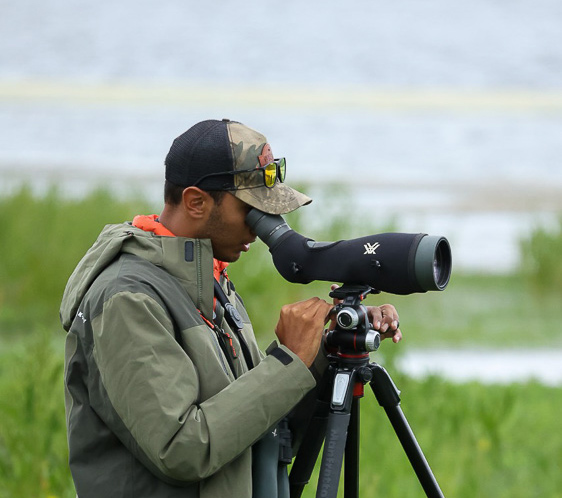
Getting to know Joshua Olszewski
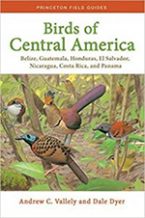
Field Guides to the Neotropics: what to take into the field

Book Review: Yellowstone’s Birds
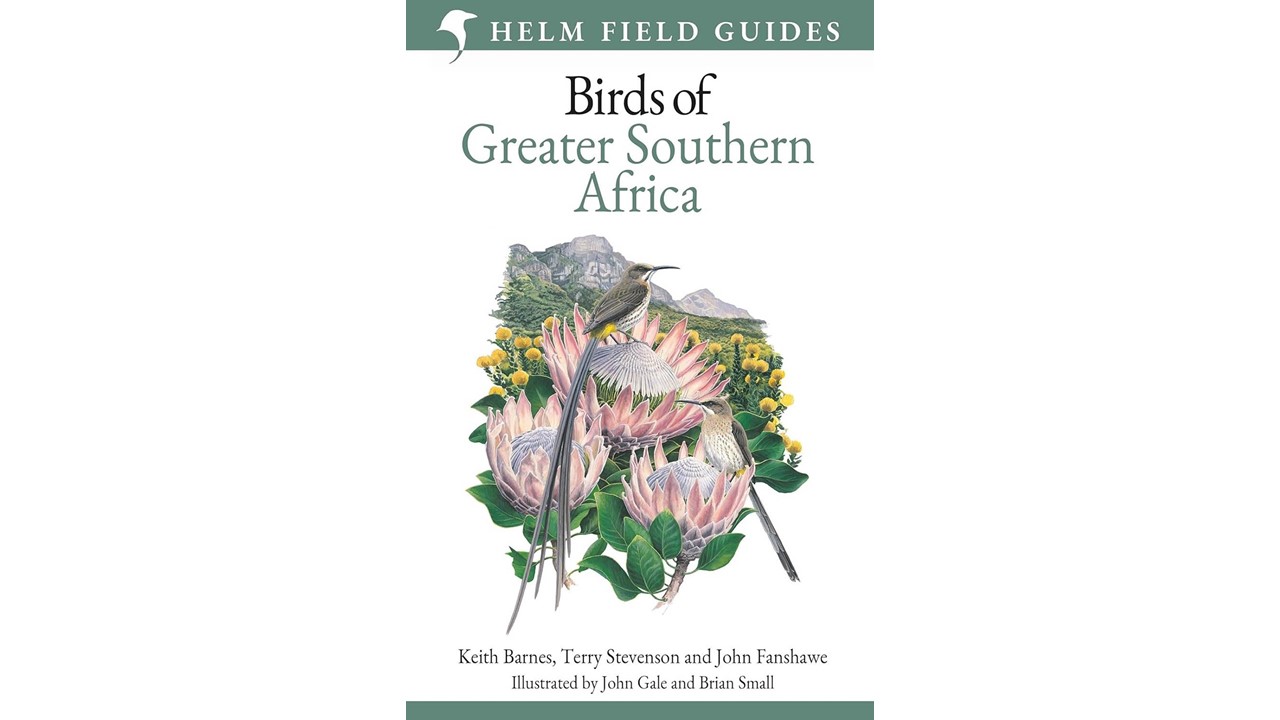
Bird Book Review: Birds of Greater Southern Africa
Recent trip reports.
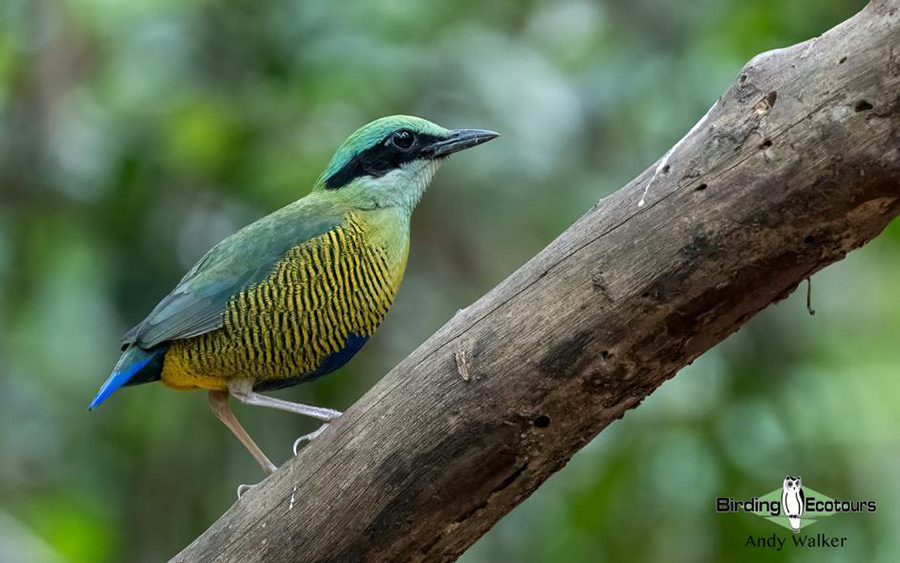
Birding Southern and Central Vietnam: Endemics and Specials Set Departure Trip Report, March 2024
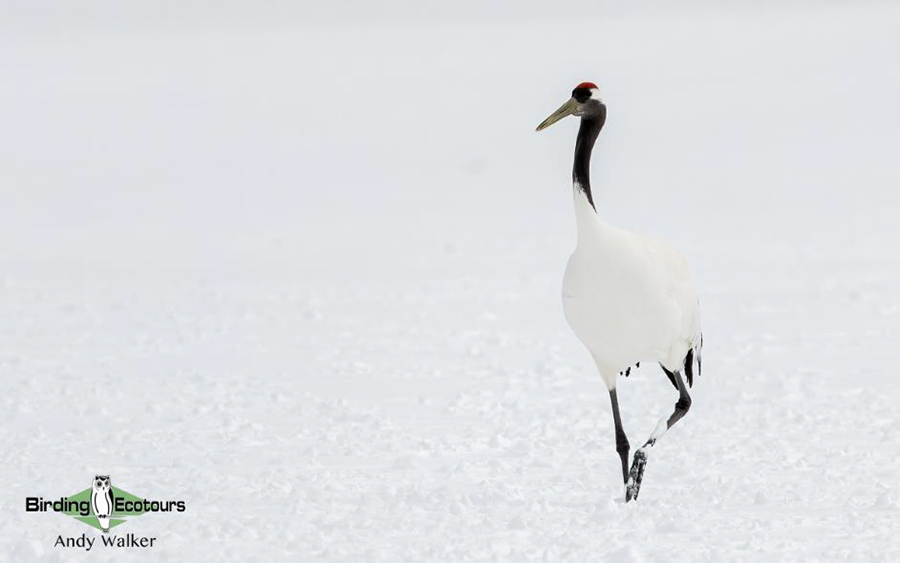
Birding Tour Japan: Spectacular Winter Birds Custom Tour Trip Report, February 2024
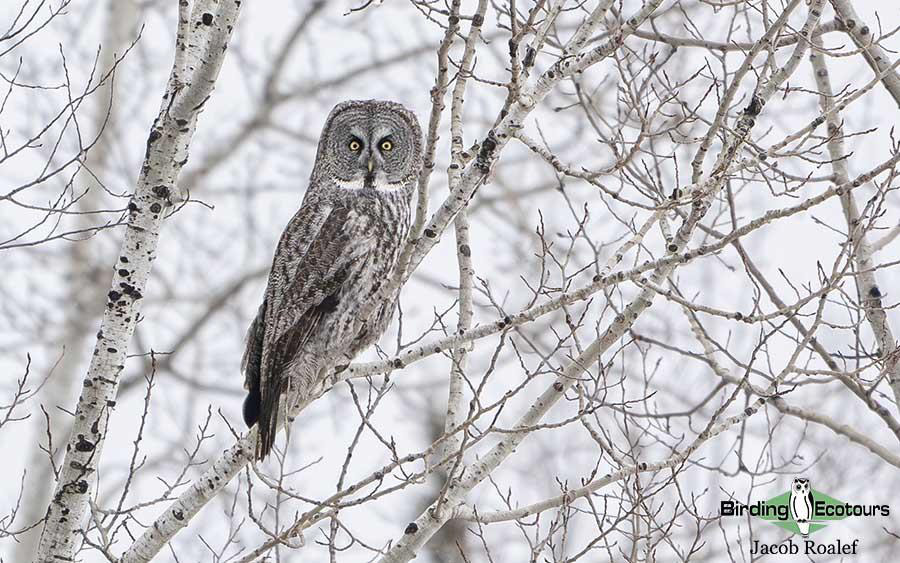
USA: Minnesota: Set Departure Birding Trip Report, January 2024
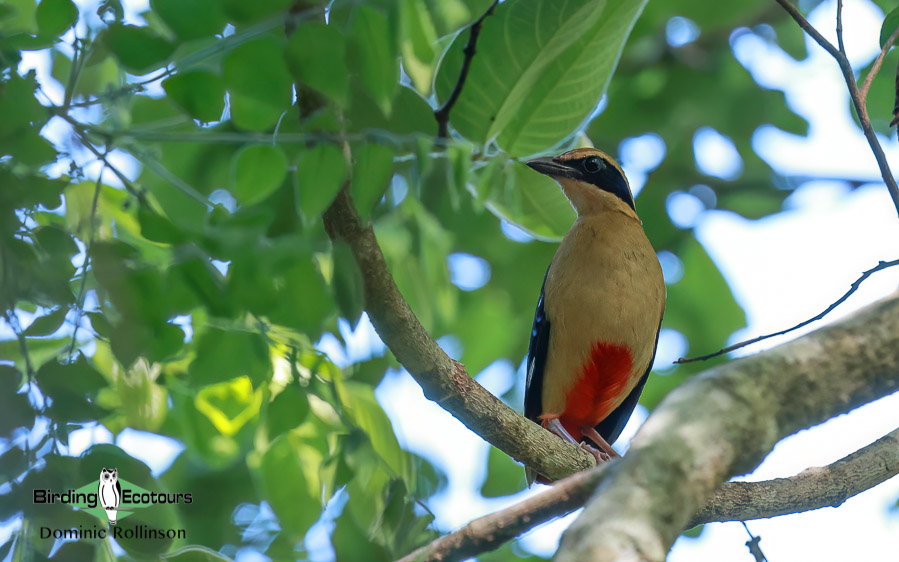
Highland Zimbabwe To Coastal Mozambique Set Departure Birding Trip Report, November 2023
Monthly video.
WHAT PEOPLE SAY ABOUT US
Dylan Vasapolli is extremely knowledgeable about birding and photography, but it’s his enthusiasm for the subject that is wonderful to experience. He has been birding for many years, and still, he has such a love for birding and the environment, which is very infectious. I was extremely lucky to have him as my guide.
We just returned from our trip to Thailand. It was wonderful. Thank you very much for arranging our tour with Andy Walker. He was the best guide we ever had. He is knowledgeable,easy going, hard working, and has all the qualities that people expect from a guide. We really enjoyed birding with him. We would be happy to go birding with him any time and would highly recommend him as a guide to any of our friends. Thanks again for giving us the opportunity to have him as our guide.
What do you most need in a guide and a tour company? Some would say trustworthy arrangements that yet stay flexible to the needs of the individual birder, some would say someone who can find you the target birds and others might say an all-rounder who combines birding knowledge, great communications skills and organisational ability. Birding Ecotours and its owner/operator Chris Lotz tick all the boxes! I’ve birded with Chris and travelled with the company and asked them to arrange tours for others, and Chris has come up trumps every time. I value my own integrity too much to give endorsements unless I have personal experience that truly warrants it. I recommend Chris Lotz and Birding Ecotours!
Our birding trip to Ethiopia was fantastic. The country is so rich in history and interesting people and customs. The birding was great! Needless to say Dominic is an expert birder. He is a warm and gracious person and we all really enjoyed his company. Our Ethiopian driver and guide, Tesfaw, was also very good. He was an experienced guide and driver. His contacts were good as were his day to day decisions. He kept our group on time and on schedule but was also flexible to our requests and needs. We rate our trip excellent (A,10/10). Thank you for all your work in arranging the trip. We appreciate all your prompt correspondences. We certainly will be using Birding Ecotours in the future. We hope to meet you in person some day.
I’ve just returned from our custom tour with Eduardo and I want to tell you – he is a jewel! Very knowledgeable, approachable, friendly and seems to enjoy birding and helping other birders find and appreciate the birds. His guiding, listening and decorum were beyond reproach. He could many times describe where the target bird was, rather than just pointing and scaring it away. A true gentleman and very helpful when I needed help or clarification. It would be a pleasure to go again with him. He was able to find 26 lifers for me when I expected at the most 19. Now my world list total is 7466 and counting!
Maine is beautiful, whether you’re on the shore or inland, and this tour showed us the best of both. Experiencing the variety of habitats with a knowledgeable guide and great companions was just what we needed after a year of not travelling. Jacob was a great leader for our group, making sure we saw the birds we wanted, but also on the look-out for mammals or letting us slow down to enjoy the wildflowers.
I would definitely recommend Birding Ecotours! Before the trip, we had prompt responses to our enquiries and we were fast assigned to a guide, Dominic Rollinson. We had such a great time with Dom on our day out in the Cape Peninsula. He was flexible with the schedule, itinerary, and with our photographic demands. He adjusted the trip so that we did everything at a slower pace, to be able to take pictures of literally every bird we saw. He knew how to position the car to get a better light on the subject, when that was the case. He’s very patient and pleasant to be with, and he shared with us some tips on where to go during the next days.
Andy Walker is a truly exceptional guide. His ready knowledge of both the local and worldwide birds is phenomenal. Andy is a very kind, helpful guide who repeatedly went out of his way to help all of us on the tour. I would bird again with him and, in fact, that's just what I'm doing right now, as I'm in Manokwari, W. Papua for the start of another tour with him. Andy has my highest recommendation.
Andy Walker is one of the best, good-natured birding guides who has served me on 42 guided tours. He makes certain that everyone in the group has seen each bird and keeps at it until that happens. The two Indonesian tours I took with Andy immediately before this one was excellent and I was able to meet my goals of seeing the last three bird families of all 248 (eBird/Clements list) and to see half of all bird species. Andy has my highest recommendation to other birders – he will serve you well!
GET OUR NEWSLETTER
All Rights Reserved, Birding Ecotours
Join our newsletter for exclusive discounts and great birding information!
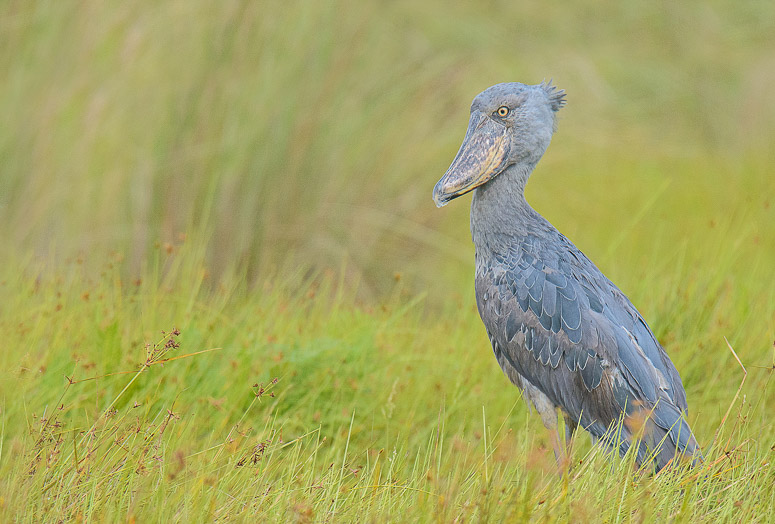
Eagle-Eye Tours offers exceptional Birding and Wildlife Tours worldwide
Small groups.
We believe small-groups are essential for a quality, enjoyable travel experience. Our tours have a guide-to-client ratio that reflects a more intimate travel experience.
Expert Guides
Our guides are expert birders and naturalists and go the extra mile to ensure an optimal experience during your trip.
We Give Back
We believe it’s important to give back to help conserve the birds and other wildlife that we so enjoy. Read more about what we do.
Birding Tours Worldwide
Small ship expedition cruises and sailing adventures, where do you want to go.
- Canada & USA
- Mexico, Central America & Caribbean
- South America
- Asia & Australasia
Most Popular Tours

Patagonia Wildlife Safari
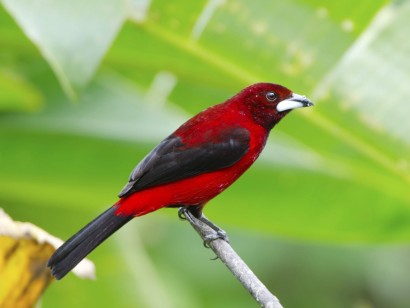
Panama: Canal Zone & the Darien

Arizona in Winter
What our customers are saying.
Read More Reviews
eagleeyetours
We have been offering high quality birding tours and expedition cruises with exceptional leaders worldwide for 25+ years!

- Conservation
- In the media
- Birding blog
- How to book
- Booking FAQs
- Plan your trip
- Land Tour FAQs
- Insurance FAQ
WHERE WE GO
- Mexico & Central America
- Australia & New Zealand

- Terms of Use
- Privacy Policy
2 Hours Guided Birdwatching in Moscow

- Moscow, Russia We will discuss a meeting point individually accoding to tha park of interest that we choose.
- We will discuss pickup details individually
- Not wheelchair accessible
- Service animals allowed
- Near public transportation
- Confirmation will be received at time of booking
- Most travelers can participate
- This experience requires good weather. If it’s canceled due to poor weather, you’ll be offered a different date or a full refund
- This experience requires a minimum number of travelers. If it’s canceled because the minimum isn’t met, you’ll be offered a different date/experience or a full refund
- This tour/activity will have a maximum of 10 travelers
- For a full refund, cancel at least 24 hours in advance of the start date of the experience.
Most Recent: Reviews ordered by most recent publish date in descending order.
Detailed Reviews: Reviews ordered by recency and descriptiveness of user-identified themes such as wait time, length of visit, general tips, and location information.
2 Hours Guided Birdwatching in Moscow provided by Birdwatching Moscow

- Ascension Island
- Tristan da Cunha
- Burkina Faso
- Central African Republic
- Congo Republic
- Côte d’Ivoire
- Equatorial Guinea
- Eswatini (Swaziland)
- Guinea Bissau
- North Sudan
- São Tomé & Príncipe
- Sierra Leone
- Eastern Cape
- KwaZulu Natal
- Northern Cape
- Northwest Province
- Western Cape
- South Sudan
- Western Sahara
- Afghanistan
- British Indian Ocean Territory
- Heilongjiang
- Inner Mongolia
- Andaman & Nicobar Islands
- Andhra Pradesh
- Arunachal Pradesh
- Chhattisgarh
- Himachal Pradesh
- Jammu & Kashmir
- Lakshadweep
- Madhya Pradesh
- Maharashtra
- Uttar Pradesh
- Uttarakhand
- West Bengal
- Indonesian Borneo
- Lesser Sundas
- Kuala Lumpur
- Peninsular Malaysia
- Sarawak & Sabah
- North Korea
- Philippines
- South Korea
- Timor-Leste
- Turkmenistan
- American Samoa
- Christmas Island
- Coral Sea Islands
- New South Wales
- Norfolk Island
- Northern Territory
- South Australia
- Western Australia
- Cocos Islands
- Cook Islands
- French Polynesia
- Marshall Islands
- New Caledonia
- Stewart Island
- Northern Mariana Islands
- Papua New Guinea
- Wallis & Futuna
- Netherlands Antilles
- Antigua & Barbuda
- Caribbean Netherlands
- Cayman Islands
- Dominican Republic
- El Salvador
- Puerto Rico
- Saint Lucia
- St Vincent & Grenadines
- St. Kitts & Nevis
- Turks & Caicos
- South Ossetia
- Republic of Croatia
- Bosnia & Herzegovina
- Auvergne-Rhône-Alpes
- Bourgogne-Franche-Comté
- Hauts-de-France
- Île-de-France
- Nouvelle-Aquitaine
- Pays-de-la-Loire
- Provence-Alpes-Côte d’Azur
- Baden-Württemberg
- Brandenburg
- Lower Saxony
- Mecklenburg-Vorpommern
- North Rhine-Westphalia
- Rhineland Palatinate
- Saxony-Anhalt
- Schleswig-Holstein
- Liechtenstein
- Lake Skadar
- Netherlands
Central Russia
- Eastern Siberia
- Northwest Russia
- Russian Arctic
- Russian Far East
- South Russia
- Western Siberia
- Basque Country
- Fuerteventura
- Gran Canaria
- Castilla y Leon
- Castilla-La Mancha
- Extremadura
- Switzerland
- Avon & Bristol
- Bedfordshire
- Buckinghamshire
- Cambridgeshire & Peterborough
- Gloucestershire
- Greater London
- Greater Manchester
- Herefordshire
- Hertfordshire
- Isle of Wight
- Isles of Scilly
- Leicestershire & Rutland
- Lincolnshire
- Northamptonshire
- Northumberland
- Nottinghamshire
- Oxfordshire
- Staffordshire
- Warwickshire
- West Midlands
- Worcestershire
- Yorkshire – East
- Yorkshire – North
- Yorkshire – South
- Yorkshire – West
- Isle of Man
- Angus & Dundee
- Clyde Islands
- Dumfries & Galloway
- Isle of May
- Moray & Nairn
- North-east Scotland
- Orkney Isles
- Outer Hebrides
- Perth & Kinross
- Upper Forth
- Brecknockshire
- Caernarfonshire
- Carmarthenshire
- Denbighshire
- East Glamorgan
- Meirionnydd
- Montgomeryshire
- Pembrokeshire
- Radnorshire
- Vatican City
- Vancouver Island
- New Brunswick
- Newfoundland
- Northwest Territories
- Prince Edward Island
- Saskatchewan
- Aguascalientes
- Baja California
- Baja California Sur
- Mexico City
- Quintana Roo
- San Luis Potosí
- St Pierre & Miquelon
- Connecticut
- Massachusetts
- Mississippi
- New Hampshire
- North Carolina
- North Dakota
- Pennsylvania
- Rhode Island
- South Carolina
- South Dakota
- Rio Grande Valley
- West Virginia
- Buenos Aires City
- Buenos Aires State
- Santiago del Estero
- Tierra del Fuego
- Espírito Santo
- Federal District
- Mato Grosso
- Mato Grosso do Sul
- Minas Gerais
- Rio de Janeiro State
- Rio Grande do Norte
- Rio Grande do Sul
- Santa Catarina
- Easter Island
- Northern Ecuador
- French Guiana
- Saudi Arabia
- Farne Islands
- Birding Tour Companies
- Bird Fairs & Festivals
- Trip Report Repositories
- Weather & Tides
- Rarity Alerts
- Ornithological Journals
- Birding Magazines
- Websites with Mega-links
- Books for Birders
- Bird Book Publishers
- Software, DVDs, Recordings etc.
- Bird Writers
- Bird Art & Artists
- Digiscoping
- Photos, Photography & Photographers
- Webcams & Nestcams
- #12348 (no title)
- #11964 (no title)
- Bird Watching Books
- Bird Watching Telescopes
- Birdfeeders, Birdhouses etc
- Optics Retailers
- Optics Companies
- Outdoor Clothing for Birders
- Other Birding Equipment & Accessories
- Tripod Companies
- Banding or Ringing
- Study & Bird Behaviour
- Birders & Ornithologists
- Threatened & Extinct Species
- Conservation
- Ornithology Courses
- Identification
- Invasive Species
- Taxonomy & Bird Names
- Acanthisittidae – New Zealand Wrens
- Acanthizidae – Australasian Warblers
- Acrocephalidae – Reed & Brush Warblers Etc.
- Aegithalidae – Bush Tits
- Aegithinidae – Ioras
- Alaudidae – Larks
- Arcanatoridae – Dapple-throat & Allies
- Artamidae – Woodswallows, Butcherbirds & Currawongs
- Atrichornithidae – Scrub-birds
- Bernieridae – Malagasy Warblers
- Bombycillidae – Waxwings
- Buphagidae – Oxpeckers
- Calcariidae – Longspurs & Snow Buntings
- Callaeidae – Kokako & Saddlebacks
- Campephagidae – Cuckooshrikes, Cicadabirds, Trillers & Minivets
- Cardinalidae – Cardinals, Grosbeaks & Allies
- Certhiidae – Treecreepers
- Cettidae – Bush Warblers, Tesias & Allies
- Chaetopidae – Rockjumpers
- Chloropseidae – Leafbirds
- Cinclidae – Dippers
- Cisticolidae – Cisticolas, Prinia, Tailorbirds & Allies
- Climacteridae – Australasian Treecreepers
- Cnemophilidae – Satinbirds
- Coerebidae – Bananaquit
- Conopophagidae – Gnateaters
- Corcoracidae – Australian Mudnesters
- Corvidae – Crows, Jays, Magpies & Allies
- Cotingidae – Cotingas, Fruiteaters & Allies
- Dasyornithidae – Bristlebirds
- Dicaeidae – Flowerpeckers
- Dicruridae – Drongos
- Donacobiidae – Donacobius
- Dulidae – Palmchat
- Elachuridae – Spotted Wren-babbler
- Emberizidae – Buntings, New World Sparrows & Allies
- Erythroceridae – Yellow Flycatchers
- Estrildidae – Waxbills, Munias & Allies
- Eulacestomatidae – Ploughbill
- Eupetidae – Rail-Babbler
- Eurylaimidae – Broadbills
- Formicariidae – Antthrushes
- Fringillidae – Finches, Seedeaters, Euphonias & Allies
- Furnariidae – Ovenbirds
- Grallariidae – Antpittas
- Hirundinidae – Swallows & Martins
- Hyliotidae – Hyliotas
- Hylocitreidae – Yellow-flanked Whistler
- Hypocoliidae – Hypocolius
- Icteridae – Oropendolas, Orioles, Blackbirds & Allies
- Ifritidae – Blue-capped Ifrit
- Incertae Sedis – Uncertain Families
- Irenidae – Fairy-bluebirds
- Laniidae – Shrikes
- Leiothrichidae – Turdoides Babblers, Laughingthrushes, Barwings & Sibias
- Locustellidae – Grassbirds & Allies
- Machaerirhynchidae – Boatbills
- Macrosphenidae – Crombecs, Longbills & African Warblers
- Malaconotidae – Bushshrikes, Tchagras, Puffbacks & Boubous
- Maluridae – Australasian Wrens
- Melampittidae – Melampittas
- Melanocharitidae – Berrypeckers & Longbills
- Melanopareiidae – Crescent-chests
- Meliphagidae – Honeyeaters
- Menuridae – Lyrebirds
- Mimidae – Mockingbirds, Thrashers & Allies
- Mohoidae – O’os
- Mohouidae – Whitehead, Yellowhead & Brown Creeper
- Monarchidae – Monarchs, Paradise Flycatchers & Allies
- Motacillidae – Longclaws, Pipits & Wagtails
- Muscicapidae – Old World Flycatchers
- Nectariniidae – Sunbirds & Spiderhunters
- Neosittidae – Sitellas
- Nicatoridae – Nicators
- Notiomystidae – Stitchbird
- Oreoicidae – Australasian Bellbirds
- Oriolidae – Old World Orioles, Pitohuis & Figbirds
- Orthonychidae – Logrunners & Chowchilla
- Pachycephalidae – Whistlers & Allies
- Panuridae – Bearded Reedling
- Paradisaeidae – Birds-of-paradise
- Paramythiidae – Painted Berrypeckers
- Pardalotidae – Pardalotes
- Paridae – Tits & Chickadees
- Parulidae – New World Warblers
- Passeridae – Old World Sparrows
- Pellorneidae – Fulvettas, Ground Babblers & Allies
- Petroicidae – Australasian Robins
- Peucedramidae – Olive Warbler
- Philepittidae – Asities
- Phylloscopidae – Leaf Warblers & Allies
- Picathartidae – Rockfowl
- Pipridae – Manakins
- Pittidae – Pittas
- Pityriaseidae – Bristlehead
- Platysteiridae – Wattle-eyes & Batises
- Ploceidae – Weavers, Widowbirds & Allies
- Pnoepygidae – Wren-babblers
- Polioptilidae – Gnatcatchers
- Pomatostomidae – Australasian Babblers
- Prionopidae – Helmetshrikes
- Promeropidae – Sugarbirds
- Prunellidae – Accentors
- Psophodidae – Whipbirds, Jewel-babblers & Quail-thrushes
- Ptilogonatidae – Silky-flycatchers
- Ptilonorhynchidae – Bowerbirds & Catbirds
- Pycnonotidae – Bulbuls
- Regulidae – Goldcrests & Kinglets
- Remizidae – Penduline Tits
- Rhagologidae – Mottled Berryhunter
- Rhinocryptidae – Tapaculos
- Rhipiduridae – Fantails
- Sapayoidae -Sapayoa
- Scotocercidae – Streaked Scrub Warbler
- Sittidae – Nuthatches
- Stenostiridae – Fairy Flycatchers
- Sturnidae – Starlings, Mynas & Rhabdornis
- Sylviidae – Sylviid Babblers, Parrotbills & Fulvettas
- Tephrodornithidae – Woodshrikes & Allies
- Thamnophilidae – Antbirds
- Thraupidae – Tanagers & Allies
- Tichodromidae – Wallcreeper
- Timaliidae – Babblers
- Tityridae – Tityras, Becards & Allies
- Troglodytidae – Wrens
- Turdidae – Thrushes
- Tyrannidae – Tyrant Flycatchers
- Urocynchramidae – Przevalski’s Finch
- Vangidae – Vangas
- Viduidae – Indigobirds & Whydahs
- Vireonidae – Vireos, Greenlets & Shrike-babblers
- Zosteropidae – White-eyes, Yuhinas & Allies
- Accipitridae – Kites, Hawks & Eagles
- Aegothelidae – Owlet-nightjars
- Alcedinidae – Kingfishers
- Alcidae – Auks
- Anatidae – Swans, Geese & Ducks
- Anhimidae – Screamers
- Anhingidae – Darters
- Anseranatidae – Magpie Goose
- Apodidae – Swifts
- Apterygidae – Kiwis
- Aramidae – Limpkin
- Ardeidae – Herons, Egrets & Bitterns
- Balaenicipitidae – Shoebill
- Brachypteraciidae – Ground Rollers
- Bucconidae – Puffbirds
- Bucerotidae – Hornbills
- Bucorvidae – Ground Hornbills
- Burhinidae – Thick-knees & Stone Curlews
- Cacatuidae – Cockatoos
- Capitonidae – New World Barbets
- Caprimulgidae – Nightjars & Nighthawks
- Cariamidae – Seriemas
- Casuariidae – Cassowaries
- Cathartidae – New World Vultures
- Charadriidae – Plovers, Lapwings & Dotterels
- Chionidae – Sheathbill
- Ciconiidae – Storks
- Coliidae – Mousebirds
- Columbidae – Doves & Pigeons
- Coraciidae – Rollers
- Cracidae – Chachalacas, Curassows & Guans
- Cuculidae – Old World Cuckoos
- Diomedeidae – Albatrosses
- Dromadidae – Crab Plover
- Dromaiidae – Emu
- Eurypygidae – Sunbittern
- Falconidae – Falcons, Kestrels & Caracaras
- Fregatidae – Frigatebirds
- Galbulidae – Jacamars
- Gaviidae – Divers or Loons
- Glareolidae – Coursers & Pratincoles
- Gruidae – Cranes
- Haematopodidae – Oystercatchers
- Heliornithidae – Finfoots & Sungrebe
- Hemiprocnidae – Treeswifts
- Hydrobatidae – Northern Storm Petrels
- Ibidorhynchidae – Ibisbill
- Indicatoridae – Honeyguides
- Jacanidae – Jacanas
- Laridae – Gulls, Terns & Skimmers
- Leptosomatidae – Cuckoo Roller
- Lybiidae – African Barbets
- Megalimidae – Asian Barbets
- Megapodiidae – Megapodes
- Meropidae – Bee-eaters
- Mesitornithidae – Mesites
- Momotidae – Motmots
- Musophagidae – Turacos, Plantain-eaters & Go-away-birds
- Numididae – Guineafowl
- Nyctibiidae – Potoos
- Oceanitidae – Austral Storm Petrels
- Odontophoridae – New World Quails
- Opisthocomidae – Hoatzin
- Otididae – Bustards, Floricans & Korhaans
- Pandionidae – Ospreys
- Pedionomidae – Plains Wanderer
- Pelecanidae – Pelicans
- Pelecanoididae – Diving Petrels
- Phaethontidae – Tropicbirds
- Phalacrocoracidae – Cormorants & Shags
- Phasianidae – Pheasants, Grouse, Partridges & Allies
- Phoenicopteridae – Flamingos
- Phoeniculidae – Wood Hoopoes & Scimitarbills
- Picidae – Woodpeckers
- Pluvianellidae – Magellanic Plover
- Pluvianidae – Egyptian Plover
- Podargidae – Frogmouths
- Podicipedidae – Grebes
- Procellariidae – Petrels, Diving Petrels & Shearwaters
- Psittacidae – African & New World Parrots
- Psittaculidae – Old World Parrots
- Psophiidae – Trumpeters
- Pteroclidae – Sandgrouse
- Rallidae – Rails, Crakes, Gallinules & Coots etc.
- Ramphastidae – Aracari, Toucans & Toucanets
- Recurvirostridae – Avocets & Stilts
- Rheidae – Rheas
- Rhynochetidae – Kagu
- Rostratulidae – Painted Snipe
- Sagittariidae – Secretarybird
- Sarothruridae – Flufftails
- Scolopacidae – Woodcock, Snipe, Sandpipers & Allies
- Scopidae – Hammerkop
- Semnornithidae – Toucan Barbets
- Spheniscidae – Penguins
- Steatornithidae – Oilbird
- Stercorariidae – Skuas or Jaegers
- Strigidae – Owls
- Strigopidae – New Zealand Parrots
- Struthionidae – Ostriches
- Sulidae – Gannets & Boobies
- Thinocoridae – Seedsnipe
- Threskiornithidae – Ibises & Spoonbills
- Tinamidae – Tinamous
- Todidae – Todies
- Trochilidae – Hummingbirds
- Trogonidae – Trogons & Quetzals
- Turnicidae – Buttonquails
- Tytonidae – Barn & Grass Owls
- Upupidae – Hoopoes
- Big Days & Bird Races
- Apocryphal Birding Stories & Urban Myths
- Bird Humour
- Listing & Listers
- Twitching & Twitchers
- Hints & Tips
- Angling & Birds
- Gardening For Birders
- Birding Blogs
- Accessible Birding
- Birding Organisations
- Birds on Stamps
- Fatbirder’s Birding Advice
Birding Central Russia
By Central Russia we mean the heartland around Moscow consisting of 18 federal areas; the ‘Oblasts’ of Bryansk, Belgorod, Vladmir, Voronezh, Ivanovo, Kaluga, Kostroma, Kursk, Lipetsk, Moscow, Novogorod, Orel, Ryazan, Smolensk, Tambov, Tver, Tula, Yaroslavyl and the City of Moscow (The city of Moscow is not Oblast, but unlike capital cities of other oblasts it is absolutely independent from the Oblast government).
The total area of this part of Russia is 650,700 square kilometers; the population is 36,951,800 people, of whom 29,100,900 live in cities. Over 40 % of the population lives in the City of Moscow and the Moscow region (oblast). This is the most developed area of Russia. Occupying only 3.8% of Russia it is home for 25.4% of population of the country. It is on the leading edge in both social and economical development among remaining 6 Federal Districts of Russia.
This Federal District has a moderate continental climate and covers several natural zones from North to South – coniferous woods, dense woods, forest-steppe and steppe. Areas covered with woods ranges from 60% in the North to 5% in the South. The main terrain type is plain with hills of various sizes and heights. However, there are swamps in the north and da eveloped network of rivers, lakes and ponds make it rather diverse in habitat and appearance.
The variety of birds in the region largely overlaps with the general avifauna of Europe, but it is more diverse than individual European countries. Birding is not developed in this region, in line with Russia in general, either as an individual hobby or as an industry. That is why, for travelling birders it is advisable to find a local person who may assist you in finding your way around, and getting to the birds.
There are numerous good birding spots around the City of Moscow and in the whole district. Most of them are territories of national parks or nature reserves. However, because of long distances, it is difficult to see a lot in a short period of time. The best season for birding is Spring-Summer (from early May to mid June), further on, in the summer nesting period birding is less rewarding, but it takes off again in the period of autumn migration (September-October) which creates a fascinating opportunity to observe considerable number of bird species in one day.
Birding Smolensk If you need to visit Smolensk on business there are several interesting areas to bird.Smolensk Lake (about a mile to the south of the city is a large lake approx 1Km x 2Km. There is a large power station situated on the northern shore. To the south of the lake is a large reed bed, and an adjacent, smaller, more vegitated lake).Lakes near Przhevalskoye About 50 miles north of Smolensk there are some lakes which are a popular day trip destination for the residents of Smolensk. There is a bus service, and it is possible to stay at several homes by the small town of Przhevalskoye (named after the famous Russian naturalist explorer. The small museum dedicated to him is well worth a visit ).The tiny village of Veyeno, which is about 30 Km east of Smolensk just south of the main Smolensk – Moscow motorway.Highlights include: Bittern, White Stork, olden Eagle, Lesser=spotted Eagle, Montague’s Harrier, Honey Buzzard, Goshawk, Hazel Grouse, Quail, Whiskered Tern, Black Woodpecker, White-backed Woodpecker, Citrine Wagtail, Penduline Tit, Nutcracker, Golden Oriole, Common Rosefinch, Savi’s Warbler, Marsh Warbler, Icternine & Booted Warbler etc.
Bryansky Les Reserve
Ugra national park, zhuravlinaya roina reserve, andrey nedossekin.
Moscow | [email protected]
Olga Batova
Ornithologist - Ecological Travel Center - Moscow | [email protected]
Pavlo Zaltowski

Atlas - Birds of Moscow City and the Moscow Region
State darwin museum of natural history - moscow, rbcu - central chernozemie branch, rbcu - moscow branch.
Abbreviations Key
NR Bryansky Les
Nr zhuravlinaya rodina, 2006 [06 june] - paul mollatt - suzdal, birds of obninsk, tits of the moscow region.
Fatbirder - linking birders worldwide... Wildlife Travellers see our sister site: WAND
- Search Please fill out this field.
- Manage Your Subscription
- Give a Gift Subscription
- Sweepstakes
- Intelligent Traveler
The Best North American Destinations for a Bird-watching Trip — and Our Tips for Having the Best Time in Each
These crowd-pleasing North American destinations are as perfect for bird-watching as they are for a good old-fashioned vacation.
COURTESY OF THE ATCHAFALAYA NATIONAL HERITAGE AREA
Perhaps you’ve heard about the bird-watching boom? Newcomers are flocking to the hobby, which studies have shown has the power to boost happiness. Another upside: unlike many outdoorsy pursuits, this one requires little in the way of specialized equipment or physical fitness.
Serious aficionados often plan their vacations around migrations, visiting spring hot spots such as Nebraska’s Platte River Valley or the shores of Utah’s Great Salt Lake. But if you’re still easing into the hobby — or traveling with friends or relatives who don’t know a warbler from a woodpecker — these five alternatives have plenty to offer in addition to bird-watching bliss.
STUART THURLKILL/COURTESY OF THE GREEN O
blickwinkel / Alamy Stock Photo
Greenough, Montana
Bird-watchers appreciate western Montana’s avian biodiversity; it’s particularly known for its populations of greater sage grouse, golden eagles, and Bohemian waxwings. The family-friendly Resort at Paws Up and its luxe, adults-only sibling property the Green O grant guests access to trails through 37,000 acres of wilderness. About 30 minutes away in Missoula, the 42-acre Greenough Park is another destination for bird spotters, with robust signage detailing local species.
Bragging Rights
The northern pygmy-owl is an adorable but ruthless carnivore that snacks on songbirds.
Besides the Birds
Both Paws Up and Green O offer a huge array of other outdoor activities, including horseback riding, rappelling, and guided fly-fishing for experienced anglers as well as those just learning to cast.
Cassie Wright/Courtesy of The Lodge on Little St. Simons Island
HOWARD CHEEK/GETTY IMAGES
Little St. Simons Island, Georgia
Accessible only by boat, this privately owned island is home to the Lodge on Little St. Simons Island . It is also part of the Golden Isles, one of the most important coastal conservation areas on the Eastern Seaboard. With rookeries of boisterous wading birds and a beach full of plovers, it’s perfect for “hard-core birders,” says Little St. Simons naturalist manager Nate Ramey. “But others can relax on our seven miles of beaches — which you only have to share with twenty or thirty other people,” because they’re open only to guests.
Rainbow-colored painted buntings are big on the island, as are wood storks. “They were a protected species, but now they’ve bounced back dramatically,” Ramey says of the long-legged wader. “It’s a testament to conservation.”
In addition to the beaches, the island has a network of hiking trails, while overnight guests can borrow bikes and fishing gear. In July, the island-wide bloom of hibiscus grandiflorus draws gardening geeks from around the U.S.
BUTCH LOMBARDI/COURTESY OF AUDUBON SOCIETY OF RHODE ISLAND
Cal Vornberger/Alamy Stock Photo
Bristol, Rhode Island
This scenic bayside village between Newport and Providence is home to intriguing species such as the wading willet and the iridescent purple martin, depending on the season. Spotting them is made easier by the boardwalks at the Audubon Nature Center & Aquarium and the hiking route at the Osamequin Nature Trails & Bird Sanctuary.
The saltmarsh sparrow may look like an everyday songbird, but this species, which nests at Jacob’s Point Preserve, is at risk of habitat loss as sea levels rise.
Bristol’s waterfront Blithewold estate has 33 acres of manicured gardens surrounding a historic mansion. In nearby Newport, the famed Cliff Walk gives a glimpse of the Gilded Age; spend the night at The Vanderbilt, Auberge Resorts Collection , where the 33 stylish rooms and suites are fresh off a two-year renovation.
SIMONE MONDINO/COURTESY OF WICKANINNISH INN
Don White / Alamy Stock Photo
Vancouver Island, BC
Summer is the best time to visit this densely forested destination, where the “fall” migration season starts as early as July for some species. Along the island’s serene eastern coast, check out the BC Bird Trail between Parksville and Qualicum Beach, where black oystercatchers, tufted puffins, and bald eagles are commonly seen. On the wild western coast, between Tofino and Ucluelet, visitors can spot soaring albatross while scouting for humpback whales, orcas, and other marine life. “May and September are also prime time for migrating seabirds,” says Mark Maftei, executive director of the Raincoast Education Society. “The nearshore and offshore waters host hundreds of thousands of waterfowl and seabirds that are moving up or down the coast in those months,” he adds.
Despite only weighing the equivalent of four nickels, the plucky western sandpiper migrates thousands of miles between Alaska and South America.
Outdoor adventures of all sorts can be had on the island. Milner Gardens & Woodland , on the eastern coast near the BC Bird Trail, has a “hidden” teahouse and trails that thread through its 70 acres of gardens and forest. In Tofino, the oceanfront Wickaninnish Inn is a family-owned Relais & Châteaux property known for its fireplaces and the dramatic views from its picture windows.
ARTHUR MORRIS/GETTY IMAGES
Lafayette, Louisiana
About a two-hour drive west of New Orleans, this city is the gateway to Cypress Island Preserve and Rip Van Winkle Gardens, both prime springtime habitats for bitterns, rails, and grebes. The broader Atchafalaya National Heritage Area surrounding Lafayette is home to five-inch-tall prothonotary warblers, with their bright-yellow feathers, and the five-foot-tall whooping crane, one of the rarest birds in North America.
With pink plumage reminiscent of a 1980s bridesmaid’s dress, the roseate spoonbill is a wading bird with a large, ladle-shaped beak.
This is the land of crawfish and zydeco, where every meal is an occasion. Dive in at Spoonbill Watering Hole & Restaurant , a James Beard Award nominee inside a refurbished Conoco station in Lafayette, where the motto is “Tastes like good times.” Maison Madeleine is a characterful alternative to the chain hotels in the area.
A version of this story first appeared in the July 2023 issue of Travel + Leisure under the headline "Bring the Binoculars."
Book Your Own Birding Trip
In collaboration with tour guide operator partners, the National Audubon Society is proud to offer suggested travel itineraries throughout the Caribbean and Latin America. These beautiful trips are packed with tremendous birding experiences in sites where Audubon is on-the-ground and actively engaged in conservation work. Click on one of the cards below to learn more.

Audubon has partnered with Rockjumper on Impact Adventures, a suite of international birding itineraries aimed at driving sustainable tourism in select biodiverse hotspots.

Audubon has partnered with Holbrook Travel on Flyway Expeditions, a series of birding trips that support conservation work in Latin America and in the Caribbean.

Across Latin America and the Bahamas, Audubon works closely with locals to build sustainable ecotourism opportunities.
Why Hire a Local Bird Guide?
By using a local guide, you ensure that tourism revenue stays in the country to improve the local economy. Our partner organizations below can put you in contact with local guides and tour operators that have first-hand knowledge of the area and can accomodate specific needs.
The Bahamas Bahamas National Trust Nassau, The Bahamas 1-866-978-4838 Email | Website
More information:
Bahamas.com Birding Guide
Paraguay Guyra Paraguay Asuncion, Paraguay Phone: (595 21) 229 097 Email | Website
More information: Aviturismo Paraguay
Belize Belize Audubon Society Belize City, Belize 501-223-4985 Email | Website
Guatemala Asociacion Vivamos Mejor Panajachel, Guatemala Phone: (502) 7762-0159/0160 Email | Website
Wildlife Conservation Society Guatemala Flores, Guatemala Phone: 502 7867-5152 Email | Website
More information: Bird Zone Atitlan
For more information or additional help, contact:
Audubon Americas National Audubon Society Washington, DC Email | Website
The National Audubon Society is not an official tour organizer, nor are we endorsing any of the tour operators listed above or hotels listed in the itineraries. The list of tour operators is by no means exhaustive and will be updated as we become familiar with more providers.
Get Audubon in Your Inbox
Let us send you the latest in bird and conservation news.
Bird-watching tourism
- Living reference work entry
- First Online: 01 January 2015
- Cite this living reference work entry

- Rochelle Steven 3 &
- Darryl Jones 4
173 Accesses
- Protected Area Tourism
- North American Participants
- Diverse Avifauna
- Wildlife Tourism
- Sustainable Tourism
These keywords were added by machine and not by the authors. This process is experimental and the keywords may be updated as the learning algorithm improves.
This is a preview of subscription content, log in via an institution to check access.
Access this chapter
Institutional subscriptions
Biggs, D., J. Turpie, C. Fabricius, and A. Spenceley 2011 The Value of Avitourism for Conservation and Job Creation – An Analysis from South Africa. Conservation and Society 9:80-90.
Article Google Scholar
Connell, J. 2009 Birdwatching, Twitching and Tourism: Towards an Australian Perspective. Australian Geographer 40(2):203-217.
Green, R., and D. Jones 2010 Practices, Needs and Attitudes of Bird-watching Tourists in Australia. Cooperative Research Centre for Sustainable Tourism. Brisbane: Griffith University.
Google Scholar
Higham, J. 1998 Tourists and Albatrosses: The Dynamics of Tourism at the Northern Royal Albatross Colony, Taiaroa Head, New Zealand. Tourism Management 19:521-531.
Moss, S. 2004 A Bird in the Bush: A Social History of Birdwatching. London: Aurum.
Download references
Author information
Authors and affiliations.
Environmental Futures Research Institute, Griffith University, Gold Coast campus, Southport, 4215, Australia
Rochelle Steven
Environmental Futures Research Institute, Griffith University, Nathan campus, 4111, Nathan, Australia
Darryl Jones
You can also search for this author in PubMed Google Scholar
Corresponding author
Correspondence to Rochelle Steven .
Editor information
Editors and affiliations.
School of Hospitality Leadership, University of Wisconsin-Stout, Menomonie, Wisconsin, USA
Jafar Jafari
School of Hotel and Tourism Management, The Hong Kong Polytechnic University, Hong Kong, Hong Kong SAR
Honggen Xiao
Rights and permissions
Reprints and permissions
Copyright information
© 2014 Springer International Publishing Switzerland
About this entry
Cite this entry.
Steven, R., Jones, D. (2014). Bird-watching tourism. In: Jafari, J., Xiao, H. (eds) Encyclopedia of Tourism. Springer, Cham. https://doi.org/10.1007/978-3-319-01669-6_18-1
Download citation
DOI : https://doi.org/10.1007/978-3-319-01669-6_18-1
Received : 14 November 2014
Accepted : 14 November 2014
Published : 24 September 2015
Publisher Name : Springer, Cham
Online ISBN : 978-3-319-01669-6
eBook Packages : Springer Reference Business and Management Reference Module Humanities and Social Sciences Reference Module Business, Economics and Social Sciences
- Publish with us
Policies and ethics
- Find a journal
- Track your research

Listing and Taxonomy

American Birding Association Checklist Committee (CLC) Report, March 2024

ABA Area Field Guides
The American Birding Association Field Guides each include hundreds of species birders are most likely to see in their state or province. Illustrated with crisp, color photographs, they include descriptions of each bird along with tips of when and where to see them, and are written by local expert birders.
- Welcome New Birders!
- Birding News
- ABA Checklist
- Listing & Taxonomy
- ABA Field Guides
- ABA Rare Bird Alert
- Festivals & Events
- Birding Clubs & Organizations
- ABA Area Birding Trails
- Listing Central
- ABA Code of Birding Ethics
Latest Podcast, Articles, & More…

08-13: This Month in Birding – March 2024

Peter Kaestner Breaks the 10,000 Bird Barrier!
Rare bird alert.

Rare Bird Alert: March 29, 2024
Field ornithology.

First Red-flanked Bluetail in the Eastern ABA Area
- Book Reviews

The Fight to Protect the Birds

March 2024 Photo Quiz
How to know the birds.

How to Know the Birds: No. 81, A Kinglet Assist from Merlin
Birds and....

No. 25: Birds and Nests
- Birding Magazine

Birding Online: March 2024
North American Birds

North American Birds: Vol. 74, No. 2
Section home pages.
- American Birding Podcast
- NAB Regional Reports
- Identification
- ABA Publications Archive
- ABA Young Birders

ABA Young Birder Program includes ABA Young Birder Camps, the ABA Young Birder Mentoring Program, and the young birder magazine, The Fledgling.

When you travel with ABA, you help build a better future for birds, birders, and birding. We combine great field birding, amazing destinations, and cultural immersion, while supporting local communities.

Birders’ Exchange provides birdwatching equipment and resources to organizations in the United States, Canada, Latin America, and the Caribbean with an educational need.

The American Birding Association is proud to partner with Thanksgiving Coffee Company to bring you Song Bird Coffee. Song Bird is grown on small farms that have been certified Bird-Friendly by the Smithsonian Migratory Bird Center, the gold standard for shade-grown, organic coffees.
ABA Community Weekends

ABA Community Weekends bring birders together near you! With the help of local friends and partners, we offer guided bird walks, workshops, and gatherings in cities across the U.S. and Canada and it’s free to participants.
- Travel and Events
- Birders’ Exchange
- ABA Song Bird Coffee
The ABA is a non-profit 501(c)(3) organization that inspires all people to enjoy and protect wild birds.
Please join us as we leverage our extensive knowledge, expertise, connections, and world-class content to bring more people into the birding community.

- My Membership
- Join ABA Community
- Flight Calls newsletter
- Matching Gifts
- Gift Planning
- Search for:
- WooCommerce Cart 0

When you travel with the American Birding Association, you help build a better future for birds, birders, and birding. Our thoughtfully designed program combines great field birding, amazing destinations, and cultural immersion, while visibly supporting local projects and communities. We help the birding world effectively work toward on-the-ground conservation and sustainable development, furthering ABA’s ongoing commitment to inspire all people to enjoy and protect wild birds. We invite you to join us in making a positive difference while enjoying some of the world’s best birding.
Upcoming Tours

2024 Bird of the Year Tour: Sax-Zim Bog and Northern Minnesota
June 13-17, 2024 Join our 2024 Bird of the Year tour in Sax-Zim Bog, Northern Minnesota. In the warmth of summer, the Bog bursts with life, as it is a breeding ground for many songbirds, including our Bird of the Year: Golden-winged Warbler! We are thrilled to announce that cover artist Natasza Fontaine will be joining us, too, for some fun and interactive art workshops during the tour. Don’t miss out on this exciting birds and art tour to one of the prettiest wilderness areas in the United States.

Belize birding tour
March 22-31, 2024

Hawaiʻi birding tour
April 2-11, 2024

Newfoundland Adult Birder Camp – FULL!
June 2-8, 2024

Borneo birding tour
Aug. 27-Sep. 6, 2024

Central and Northern Argentina birding tour
October 3-16, 2024

Dominican Republic birding tour
December 6-15, 2024
Recent Trip Reports


2022 Kenya Trip Report
American Birding Association 2022-09-28T13:00:23-04:00 September 27th, 2022 |
We enjoyed 11 glorious days traveling to three very different areas of Kenya: Samburu, Buffalo Springs and Shaba Game Reserves in the dry northern region; Lake Nakuru National Park in the rift read more >>

2022 Adult Birder Camp West Virginia Trip Report
Katinka Domen 2022-09-28T13:14:55-04:00 August 17th, 2022 |
Day One We began our first full day at a privately-owned farm field that is left uncut until the higher-altitude grassland birds finish breeding. The stars of the show were the Bobolinks. read more >>

2022 Bird of the Year Southeast Arizona Trip Report
Katinka Domen 2022-09-28T13:20:28-04:00 September 12th, 2022 |
Our friends thought we were crazy to head to Southeast Arizona in July! I had a few concerns myself, but off we went. Turns out, the weather in the canyons and higher read more >>
COVID-19 VACCINATION VERIFICATION POLICY FOR ABA TRAVEL AND EVENTS
Until further notice, COVID-19 vaccination is a requirement to participate in any and all ABA Travel. Exact vaccination requirements are dependent on country of residence, country(ies) visited, and other laws, rules, and regulations of local vendors. The ABA will do its best to communicate with you after booking, and prior to travel, as rules are subject to change. Acceptable proof of COVID-19 vaccination includes a certificate issued at national or subnational level or by an authorized vaccine provider (e.g., the CDC vaccination card) , v accination certificate with QR code , digital pass via smartphone application with QR code (e.g., United Kingdom National Health Service COVID Pass, European Union Digital COVID Certificate), digital photos of vaccination card or record, downloaded vaccine record or vaccination certificate from official source (e.g., public health agency, government agency, or other authorized vaccine provider), or a mobile phone application without QR code . All forms of proof of COVID-19 vaccination must have all of the following (i) personal identifiers including full name plus at least one other identifier such as date of birth or passport number that match the personal identifiers on the passenger’s passport or other identity documents; (ii) the name of official source issuing the record (e.g., public health agency, government agency, or other authorized vaccine provider; and (iii) vaccine manufacturer and date(s) of vaccination. Requirement for boosters or additional vaccination is subject to state, federal, and national guidelines, rules and requirements applicable to your country of citizenship, and countries visited during ABA Travel.
Birding (Yes, Birding) Is a Multi-Billion Dollar Ecotourism Industry

Photo illustration by Sarah Rogers/The Daily Beast
Millions of birders around the world set out to catch a rare glimpse of plumage, a bold stroke of color, or to hear an unusual song—and they're changing the face of tourism.
Brandon Withrow
I will never forget the first time I got lost in the eyes of a ruby-throated hummingbird. It was late in spring seven years ago and I was writing out on our patio. Flashes of her green back cut through our garden, darting from petunia to petunia. My eyes shifted up from the laptop, finding her only inches away. We briefly stared quietly at each other, frozen in time at 53 beats per second.
Over the years, while I’ve added feeders—seed, suet, and nectar—and enthusiastically packed my camera and binoculars for the nearest nature preserve, I’ve found that compared to serious birders, I’m still just a novice birder, or maybe just an avid bird-lover.
Determined birders are ornithological junkies, compelled to travel long distances by their love of spotting a rare species. In fact, they are part of a growing multi-billion dollar ecotourism industry. And birding, as it turns out, is not only the perfect excuse for travel, but also part of a practical global conservation effort to help both birds and humans thrive.
It is estimated that over $800 billion is spent a year in outdoor recreation in the United States, with birdwatching having an economic benefit of $41 billion dollars. Roughly $17.3 billion is spent annually in wildlife-watching trip-related expenses in the U.S., with more than 20 million Americans taking birding-specific trips.
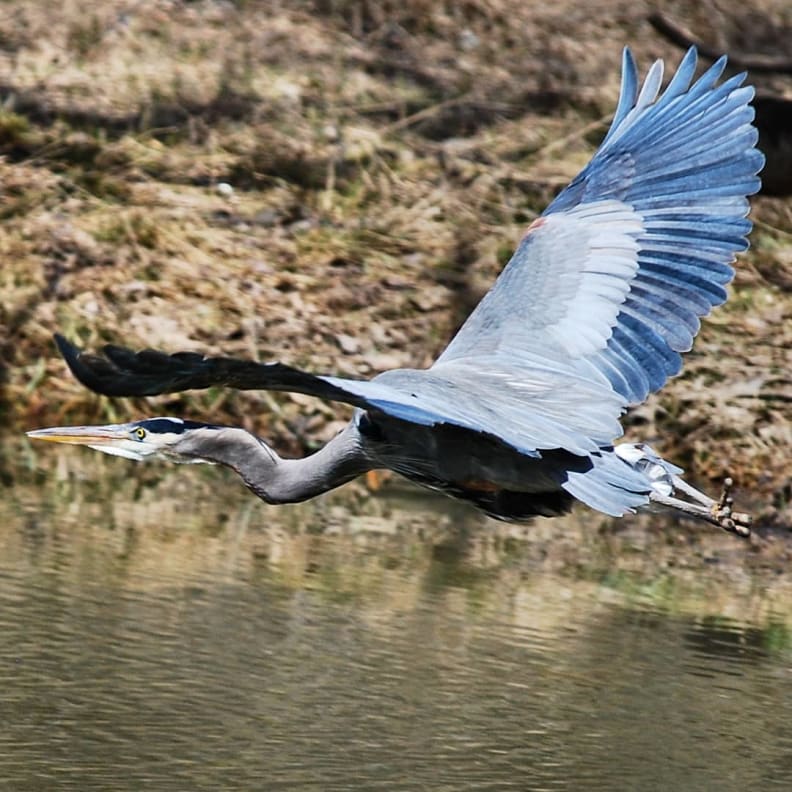
Courtesy Brandon Withrow
One of those birding hotspots is the Rio Grande Valley in Texas, which I visited last October as part of a press trip to ride an extensive new cycling trail system.
This is a region that closely combines both the dry prairie landscape and the colorful tropical palette of the Gulf, bringing in a spectacle of birds that not only call this home, but make this a regular stop during migration. Here I first experienced the end-of-day cacophonous descent of red-crowned parrots into the trees.
Every November, the Birding Festival centered in Harlingen, Texas, brings in 2 million over a five-day event, with each birder hoping to tick off a large number of unique and exotic species on their avian bucket-list.
It was on this cycling trip that I met Dorian Anderson , one of the industry’s most passionate birders, with an incredible photographic eye . As we biked the region’s rail-trails, I could hear him identifying the call of birds.
Anderson is not your typical birder, however. With a doctorate in developmental genetics and post-doctoral work under his belt, he found himself falling in love with birding. In 2014, he spent a year on his bike traveling the country finding birds and blogging about it —he is currently writing a book about the experience.

Coutersy Brandon Withrow
“I wanted out from my career,” Anderson tells me, “and the bike trip was something sufficiently grand, sufficiently different, and sufficiently individualistic that I could go and do it. I don’t really work well in structures. That’s not really my style.”
Anderson figured that if he connected seven key areas across the country at the right time of the year, he could get in a list of 600 species. So he embarked on his road trip with no real cycling experience, getting 40 flats—until he finally bought kevlar tires. He rode in deep snow below freezing temperatures, was attacked by dogs, hit by a vehicle, and nearly struck by lightning. But he did meet fellow birders along the way, who helped him with supplies, places to stay.
“From an ecotourism standpoint,” says Dorian Anderson, “the Lower Rio Grande Valley has a great product. Birders are looking for species you can’t see in other places and the Rio Grande Valley is so good because you can see all of these Mexican birds there.” Anderson annually leads group tours for the festival.
Birders who travel large distances tend to do it in more traditional ways—they either fly into places like the Rio Grande Valley or take a road trip. They also tend to be baby boomers, those who are in a place in life that allows for disposable income and prolonged travel.
Since it brings in money, ecotourism is frequently seen as an incentive for protecting habitats and species.
“This is particularly true with birding ecotourism,” says Matthew Jeffery, the director of programs and deputy director (international) at the National Audubon Society , “because birding ecotourists typically have a lighter footprint from not wanting to disturb the birds and are often pioneers for furthering conservation projects to protect the habitats of wild and rare bird species.”
To that end of protecting habitats, organizations like the National Audubon Society are working on building birding-based ecotourism in developing countries. It is intended to be a win-win for those living there, protecting the area’s natural treasures and providing income.
“This can be seen in the Northern Colombia Birding Trail project from Audubon and its partners—Patrimonio Natural, the Asociación Calidris, and support from USAID,” says Jeffery. (This last summer, Anderson also helped the National Audubon Society develop birding itineraries for Colombia.)
Colombia is a birder paradise, with over 1900 bird species—more than anywhere else on the planet, with several only found in certain regions of the country. The country is the only home for eight species of hummingbird, including the stunning shimmering-green and purple-bearded Buffy Helmetcrest .
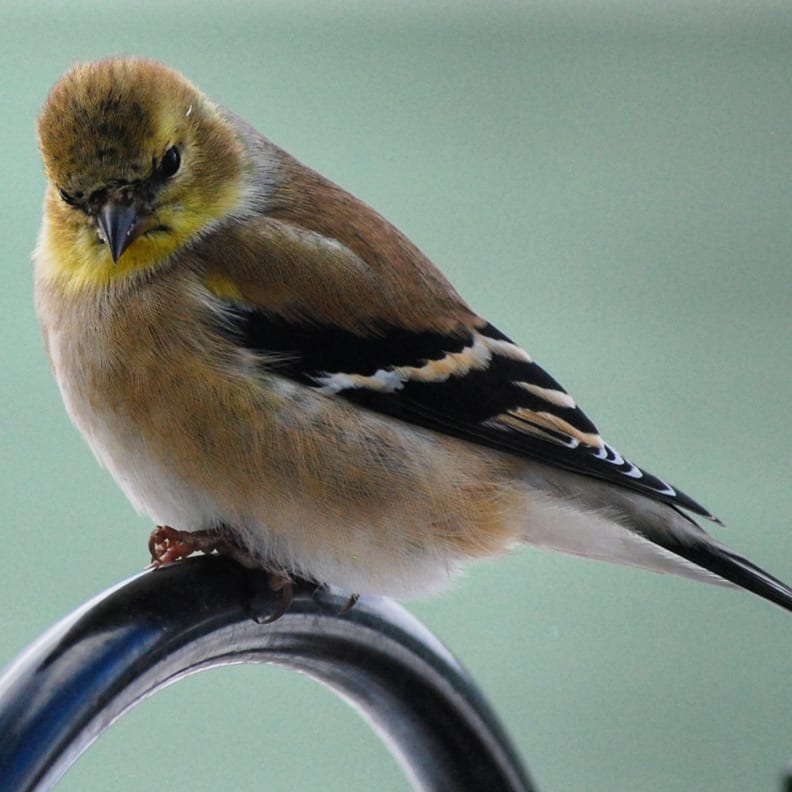
“This project trained 43 local guides with environmentally focused practices,” says Jeffery, “20 of which worked in bird-based tourism, and resulted in 53 percent of those working in bird-based tourism seeing an increase in their income.”
Projects like this create partnerships with local governments and by focusing on communities near important habitats, they help to form what he says are “buffer communities,” where they are “able to strengthen their involvement in conservation often resulting in a reduction of habitat degradation and sometimes restoration.”
Due to Audubon’s pragmatic approach, which builds its local programs off of trade-offs and economic incentives with local governments and representatives, they have not been without criticism from other conservationist organizations who find it too compromising.
Yet they have taken an approach that intends to move the needle when they can.
Birding ecotourism in smaller economies like Colombia becomes a way not only to find rare birds—at least for a Northern American or European birder—but also to use global adventures in lush natural habitats to infuse the dollars into developing regions through lodges or tour guides, making natural conservation efforts worthwhile to communities.
You don’t have to travel far, however, to find stunning birds—your backyard will do fine.
Jeffery notes that many in the United States DIY their birding. (In my own backyard, for example, I can find upwards of 20 species of birds—including goldfinches, cardinals, woodpeckers, and nuthatches—all at one time in the spring.)
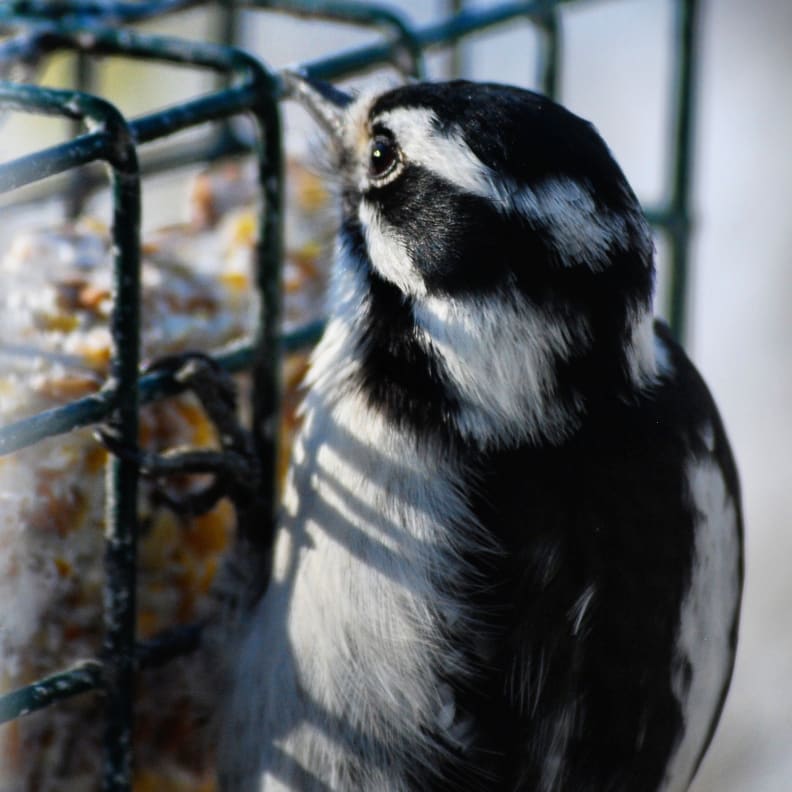
Within communities across the country, it is frequently possible to find birding festivals within a short driving distance. These festivals help to bring in outside dollars.
In Northwest Ohio, for example, where habitat restoration projects and wildlife refuges are getting attention, birding has grown in leaps and bounds, making festivals like The Biggest Week in American Birding possible.
“The Biggest Week in American Birding festival, which will mark its tenth year next May, has put our region on the map internationally as one of the premier birding destinations in North America,” says Scott Carpenter, the director of public relations for Metroparks Toledo .
The festival is a chance to find the mass migration of approximately 20 colorful warbler species in one fell swoop, including water birds like egrets and the elegant great blue heron. Venturing away from these marshlands to the local woodlands, and an array of woodpeckers from the downy and hairy to the iconic red-crested pileated are possible.
“Over 20 years ago,” says Carpenter, “when I was an outdoors columnist for newspapers, birders and tourism professionals talked about the spring songbird migration and how it was the best kept secret in our region.”
When he would travel to Leamington, Ontario, he’d find banners along the streets welcoming birders.
“I found it strange that the south shore of Lake Erie didn’t receive that kind of notice,” Carpenter tells me. “After all, we have the same birds, earlier, and fantastic access to public lands where people can enjoy them. So, a few years ago, when I saw ‘Welcome Birders’ on banners lining the streets in my hometown of Oregon, Ohio, it was a dream realized. Black Swamp and Biggest Week made that happen.”
Sponsored by the Black Swamp Bird Observatory at Magee Marsh, the festival drew in approximately 90,000 people from 52 countries (six continents) in the spring of 2018, with birding bringing $40 million into the region annually.
The area hopes to keep capitalizing on these efforts, making others aware of their natural resources through new bike and hiking trails in the park system, camping, and water kayaking trails along the Maumee River, and the development of the Treehouse Village set to have its first guests next year.
Whether it’s birding festivals in Northwest Ohio or the Rio Grande Valley, or even hawk migrations in Cape May, NJ, or millions of sandhill cranes along the Platte River in Nebraska, birding ecotourism is big business in the United States and an emerging industry powerhouse for developing countries.
Globally, millions of birders like me set out for a chance to see that rare plumage, that bold stroke of color, or to hear that unusual song—even if not every species will visit you face-to-face and acknowledge your existence, like my hummingbird did.

Got a tip? Send it to The Daily Beast here .
Twitchers reveal their top spots for birdwatching in the US

Nov 9, 2023 • 6 min read
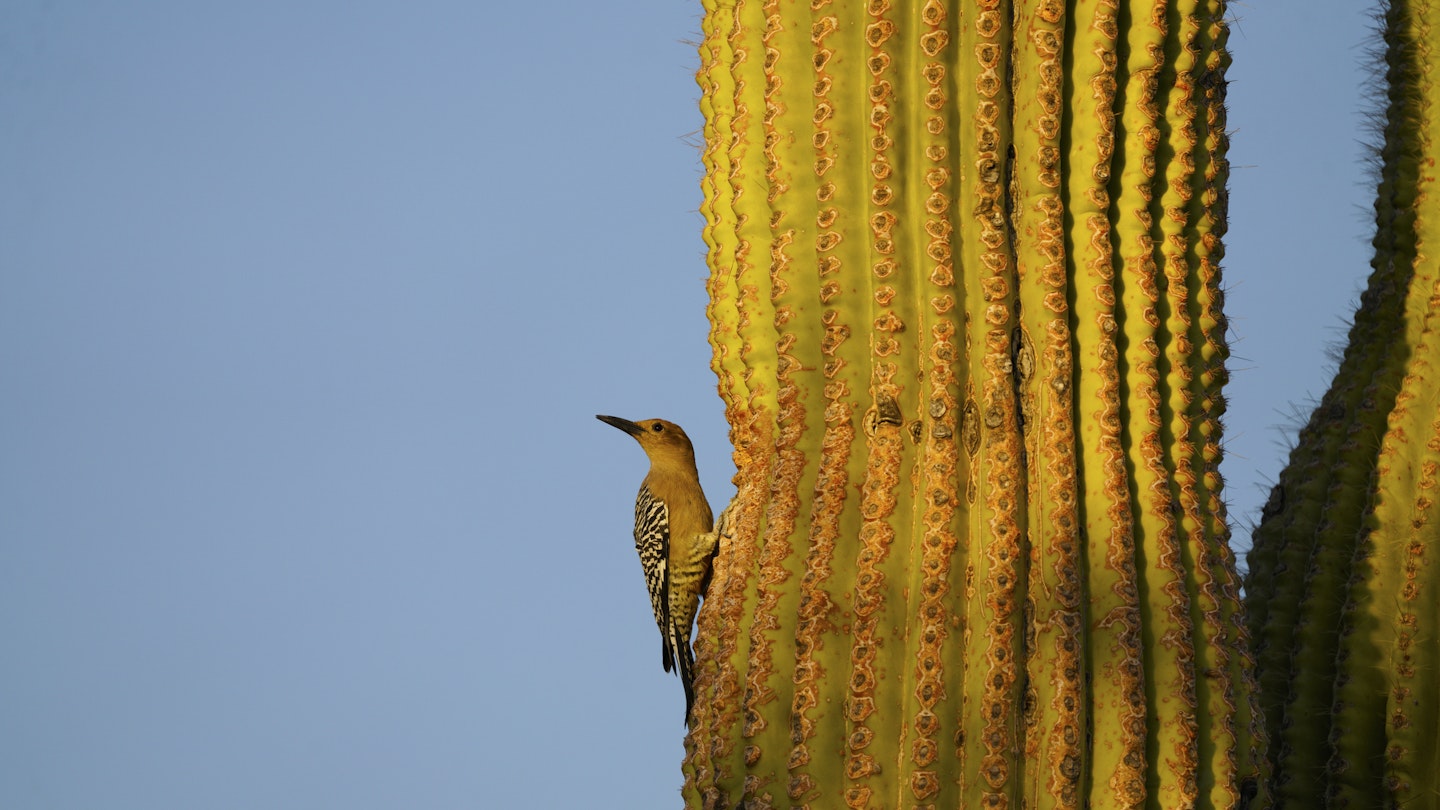
The area around Tucson features a variety of habitats for birds, such as Saguaro National Park © G Parekh / Getty Images
Becoming a birder is easy – all you have to do is step outside.
Be it NYC's urban jungle or California's wild coast, birds are everywhere – and enjoying the winged wonders is free.
According to the US Fish & Wildlife Service , roughly 45 million Americans consider themselves birders – and during the pandemic, the number of avian enthusiasts soared. In 2020, downloads of online bird-identification apps like Merlin Bird ID and the National Audubon Society's Mobile Bird Guide doubled their usual rate. Sales of birding merchandise shot up nearly 50%. Even today, the popularity of birding shows no signs of fading.
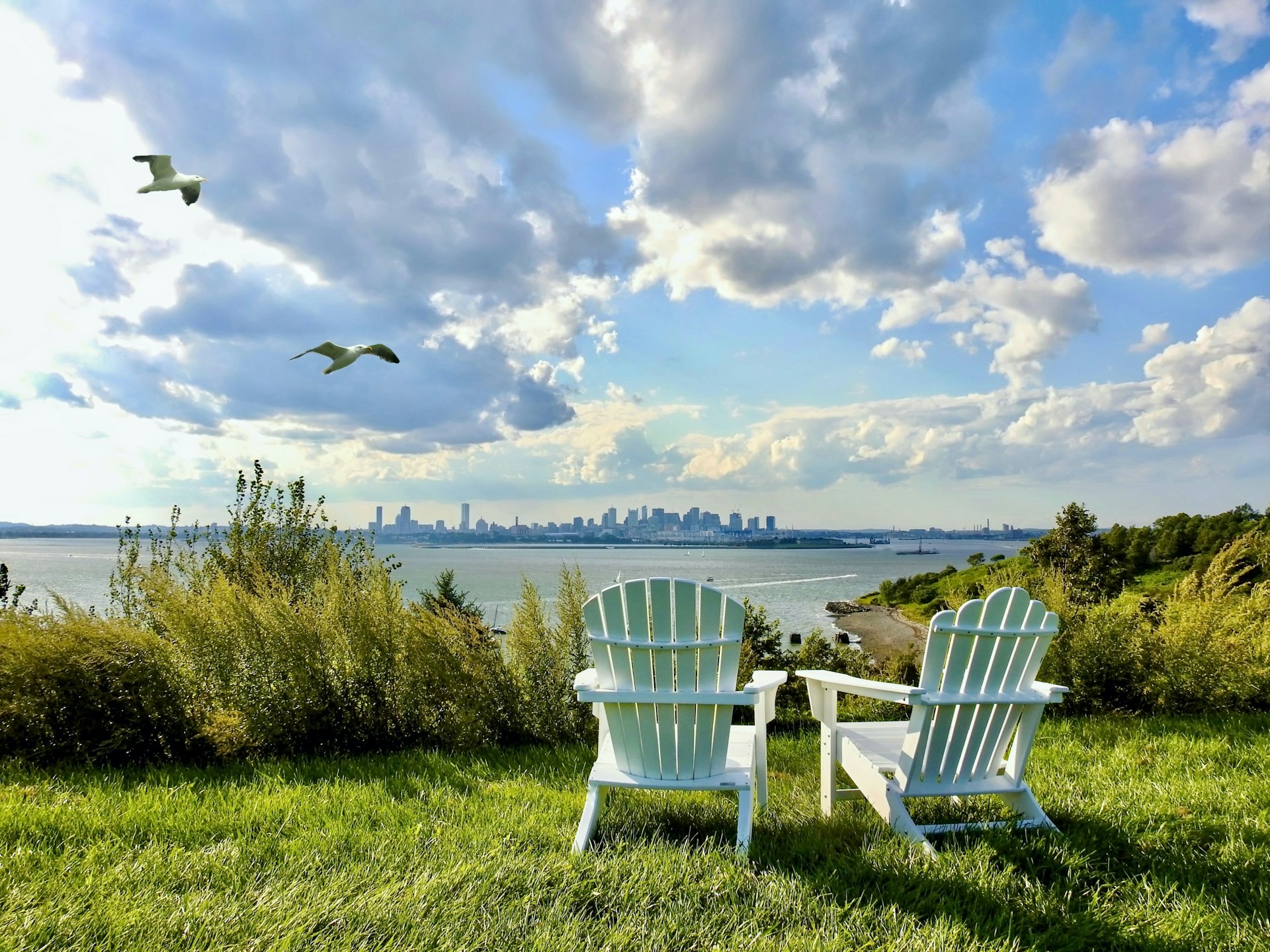
“Birding shifts your perceptions, adding new layers of meaning and brokering connections: between sounds and seasons, across far-flung places, and between who we are as people and a wild world that both transcends and embraces us,” writes NYC-based birder Christian Cooper in his 2023 memoir Better Living Through Birding (a New York Times Bestseller). “In my life, it has been a window into the wondrous.”
But not all birding locations are equal – so we chatted with American bird specialists to find out which US destinations are top-tier for twitchers. Here are their recommendations.

1. Harlingen, Texas
The southern tip of Texas is tops for birding, particularly when Harlingen hosts the Rio Grande Valley Birding Festival during fall's migration season.
A good day of birding on the East Coast might mean spotting 50 to 60 species. In Harlingen, you might spot nearly 100 species after a few hours. Birders will appreciate the riot of breeding birds migrating south from places like Canada, but they'll lose their minds over colorful species from Central America and Mexico that sometimes visit the area.
With a list of endemic birds found nowhere else in the US, the Lone Star State has plenty of reasons to lose their minds year-round. Noteworthy residents include the green jay – which flashes brilliant emerald, saffron, and navy plumage – and the chachalaca. Although this pheasant-sized bird boasts the elegant profile of a tiny velociraptor, it screeches like a remedial trumpet player.

2. New York City, New York
Molly Adams, founder of the Feminist Bird Club , was surprised when she opened the app eBird and found that Brooklyn's Prospect Park is one of New York City's most ecologically rich hotspots for birdwatching. Although the pigeon reigns supreme on NYC's streets, it's got stiff competition in the 1700 parks around town.
New York City's urban green spaces provide a much-needed respite for over 200 species of migratory birds traveling throughout spring and fall. “These pocket parks are part of the Atlantic Flyway, so during migration, you can see close to 100 species in one day,” she explains.
Adams, who creates inclusive birdwatching opportunities for BIPOC, LGBTQIA+ folx and women, loves how long the birding season lasts in autumn. Still, there's nothing better birding-wise than going through the winter and having spring come," she says. “There are all these colorful birds.” Be it a scarlet tanager in Central Park or a ruby-throated hummingbird flitting through Jamaica Bay, America's most populous city boasts an equally dizzying amount of biodiversity. “It really invigorates my passion for birding,” Adams notes.
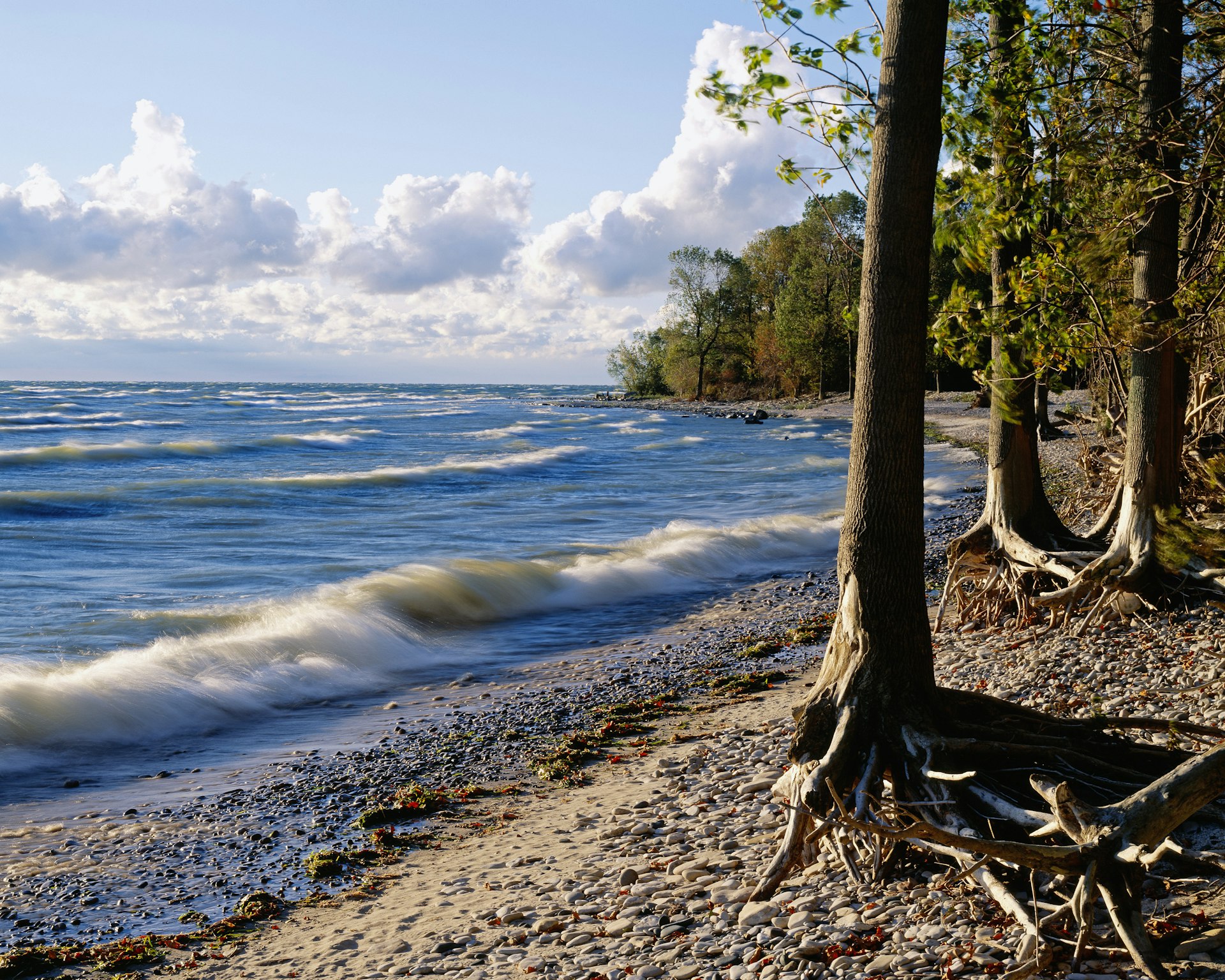
3. Toledo, Ohio
Toledo might not be high on most travelers' to-do lists, but the surrounding region is bar-none for birders visiting the Biggest Week in American Birding Festival . Lake Erie's southern shores become the unofficial warbler capital of the world every May as more than 300 species travel from South America to the Great White North.
Weary migrating warblers stop around Toledo to refuel before continuing across Lake Erie into Canada, and one of their favorite places to find refuge is the Magee Marsh Wildlife Are a. Visitors walk along a boardwalk to view the avian Elysium, and though it gets busy during spring migration, the crowds won't stop you from spotting dozens of winged wonders.

4. Point Reyes National Seashore, California
Thirty miles north of San Francisco , the San Andreas fault line splits the California coast in two to form the Point Reyes National Seashore. Rolling hills stretch to the east, ocean waves crash on unspoiled beaches to the west, and nearly 500 species of birds soar around the 70,000 acres of protected land year-round.
With abundant forests, estuaries and grasslands, this area is a winged wonderland for birds migrating along the Pacific Flyway. Of particular note is the endangered snowy plover, a small, cream-white creature that skitters along the shoreline. According to the National Audubon Society , many birders also check out nearby Bolinas Lagoon, “where a tidal estuary attracts waterfowl, wading birds, and, when the tide is right, large flocks of shorebirds.”
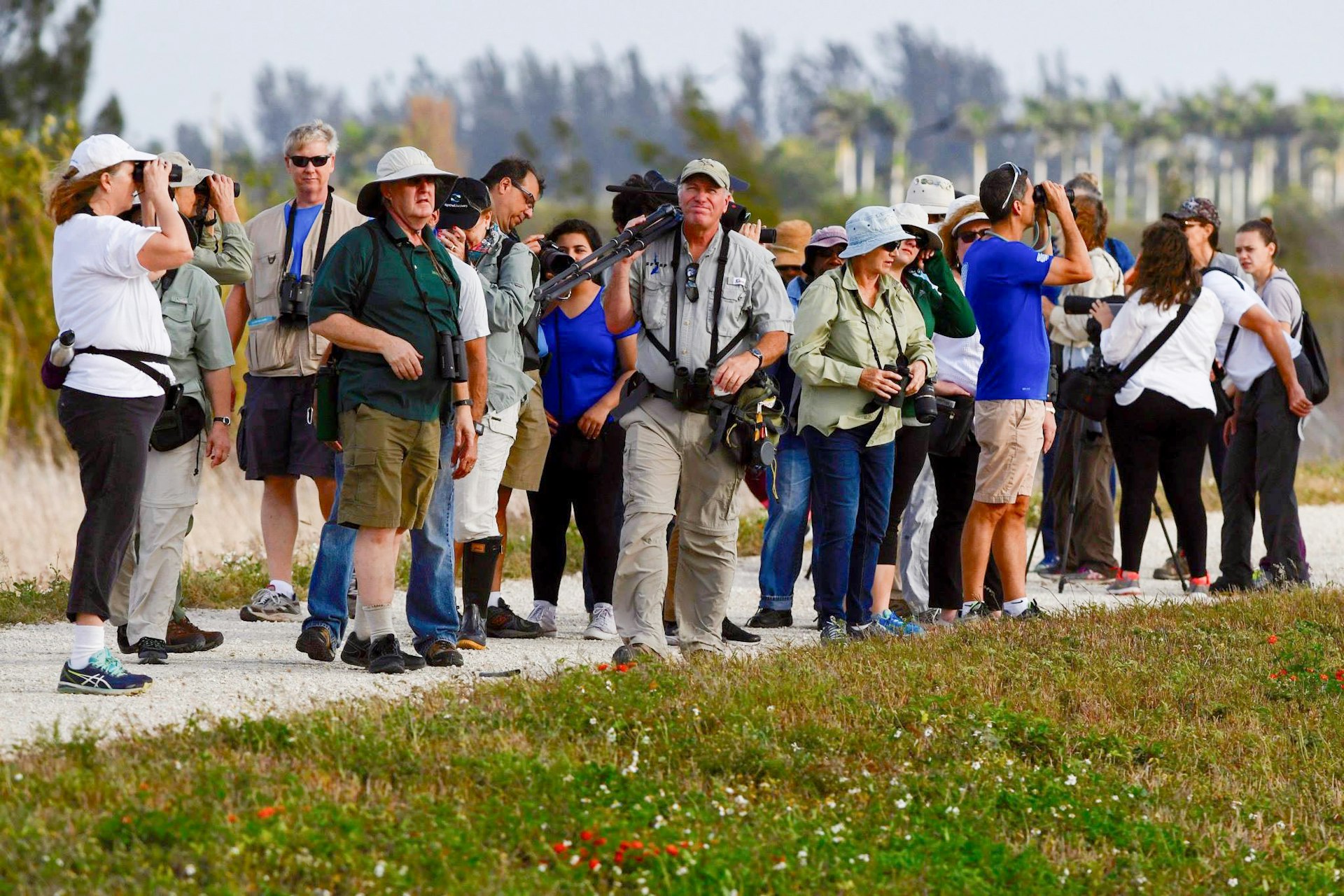
5. Everglades National Park, Florida
Gators may be the crowning glory of the Everglades , but North America's wading birds are also an essential part of Florida's wetlands ecosystem.
Kayakers and canoeists can float along the Gulf Coast's waters to watch egrets, ibis, and roseate spoonbills pick through the shallows for food. The biking and hiking trail at Shark Valley, a one-hour drive from Miami , also offers an easy escape from South Florida's suburban sprawl if you're looking for ornithological entertainment.
Winter is an ideal time to visit, as it offers “the highest diversity of birds and the best conditions for birding,” says Brian Rapoza, the Tropical Audubon Society's Field Trip Coordinator. “One of the season's highlights is when the swallow-tailed kites come back to Florida from their wintering grounds in Central and South America, usually in the second or third week of February.”

6. Tucson, Arizona
From Saguaro National Park to the nearby Chiricahua Mountains, Tucson and the surrounding area sport an abundance of species that can't be found anywhere else in the US. “It's a popular place for people who keep national lists with the number of birds they've seen in North America,” says Will Russell, owner of local bird tour company Wings .
While spring is prime birding time, July's monsoon season brings a set of international fliers to the region. “Hummingbirds that bred in Mexico disperse north, so instead of having six or seven kinds of hummingbirds, there are sometimes 12 or 13,” says Russell.
Birds aren't the only thing that makes Tucson's bird scene spectacular. “Tucson is a place where many bird people come to retire,” says Jennie MacFarland, Bird Conservation Biologist for the Tucson Audubon Society . “It's got a strong birding community.” Local birders can often be found at the Sweetwater Wetlands, scaling Mount Lemmon, or checking out the bird feeders in Madera Canyon.
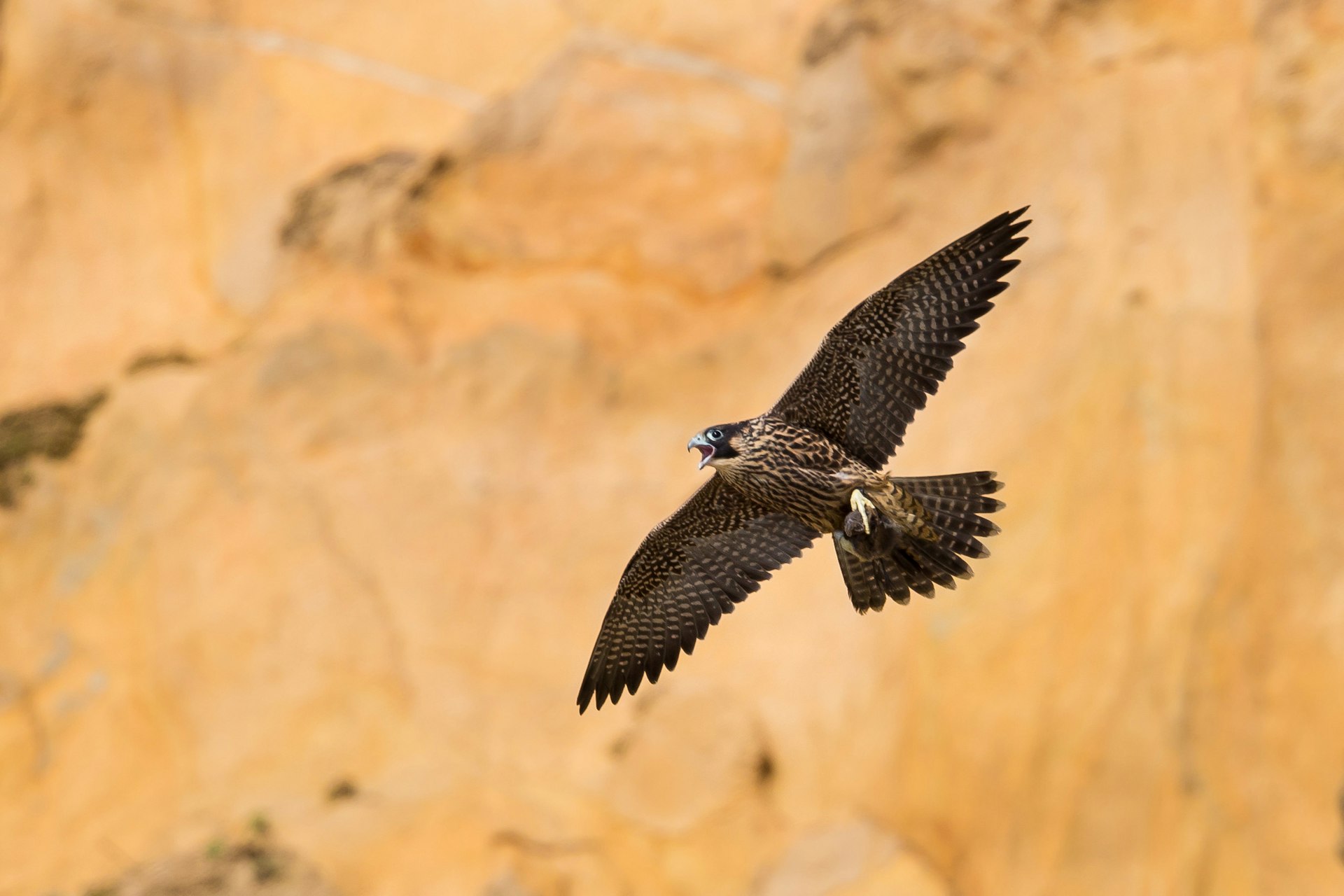
7. Cape May, New Jersey
If Hitchcock's 1963 avian apocalypse thriller The Birds leaves you feeling queasy, skip Cape May during October's migration season. The Audubon festival's “So Many Birds” tagline is an understatement.
Birds migrating along the Atlantic Coast throughout spring and fall funnel into Cape May, a peninsula on the southern tip of New Jersey. The result is a feather-frenzied traffic jam. Whether watching warblers from the Cape May Migratory Bird Refuge or raptors along Higbee Beach, you can look at any point in the sky and eye 15-20 birds trying to figure out the next leg of their journey.
Perhaps the most magnificent creature to spot during this pandemonium is a peregrine falcon. While many birds struggle against whipping winds, peregrine falcons can cut across the horizon as if there's no wind at all. They seem elegant and assured – the calm amidst the chaos.
It's precisely the kind of serenity that makes birding so appealing.
This article was first published June 2020 and updated November 2023
Explore related stories
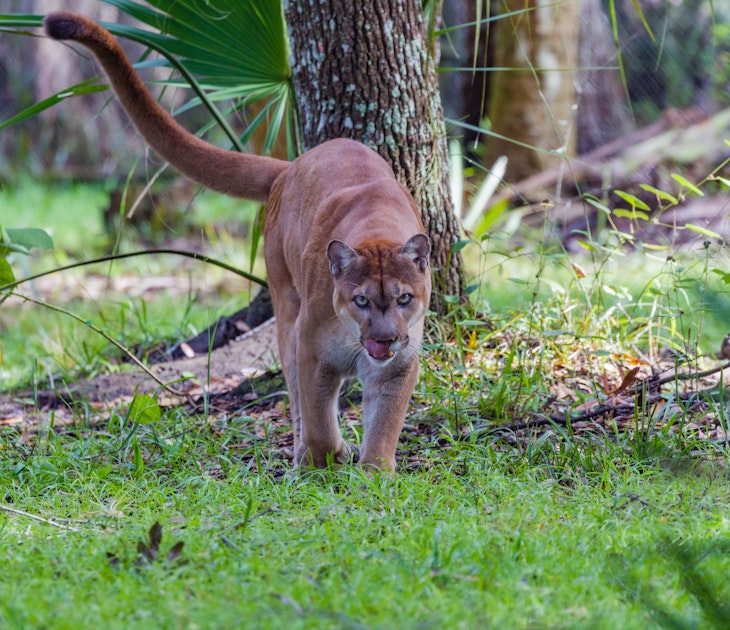
National Parks
Apr 3, 2024 • 6 min read
A trio of treasures, Florida’s national parks cater those who love everything wild and offbeat about the Sunshine State. Here’s all you need to know.

Apr 2, 2024 • 9 min read
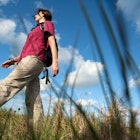
Mar 26, 2024 • 5 min read
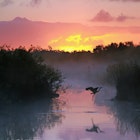
Mar 24, 2024 • 6 min read

Mar 23, 2024 • 9 min read

Mar 22, 2024 • 9 min read

Mar 22, 2024 • 5 min read

Mar 15, 2024 • 10 min read

Mar 5, 2024 • 5 min read

Featured Trips
These tours are Guaranteed Departures, or only need a couple more bookings to become guaranteed.
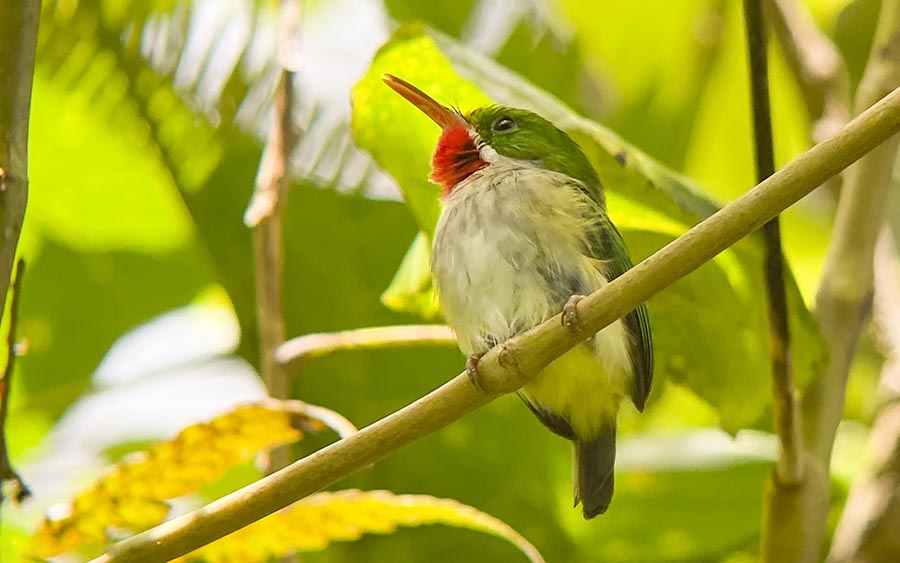
2025 Puerto Rico Escape – Endemics and Island Birding
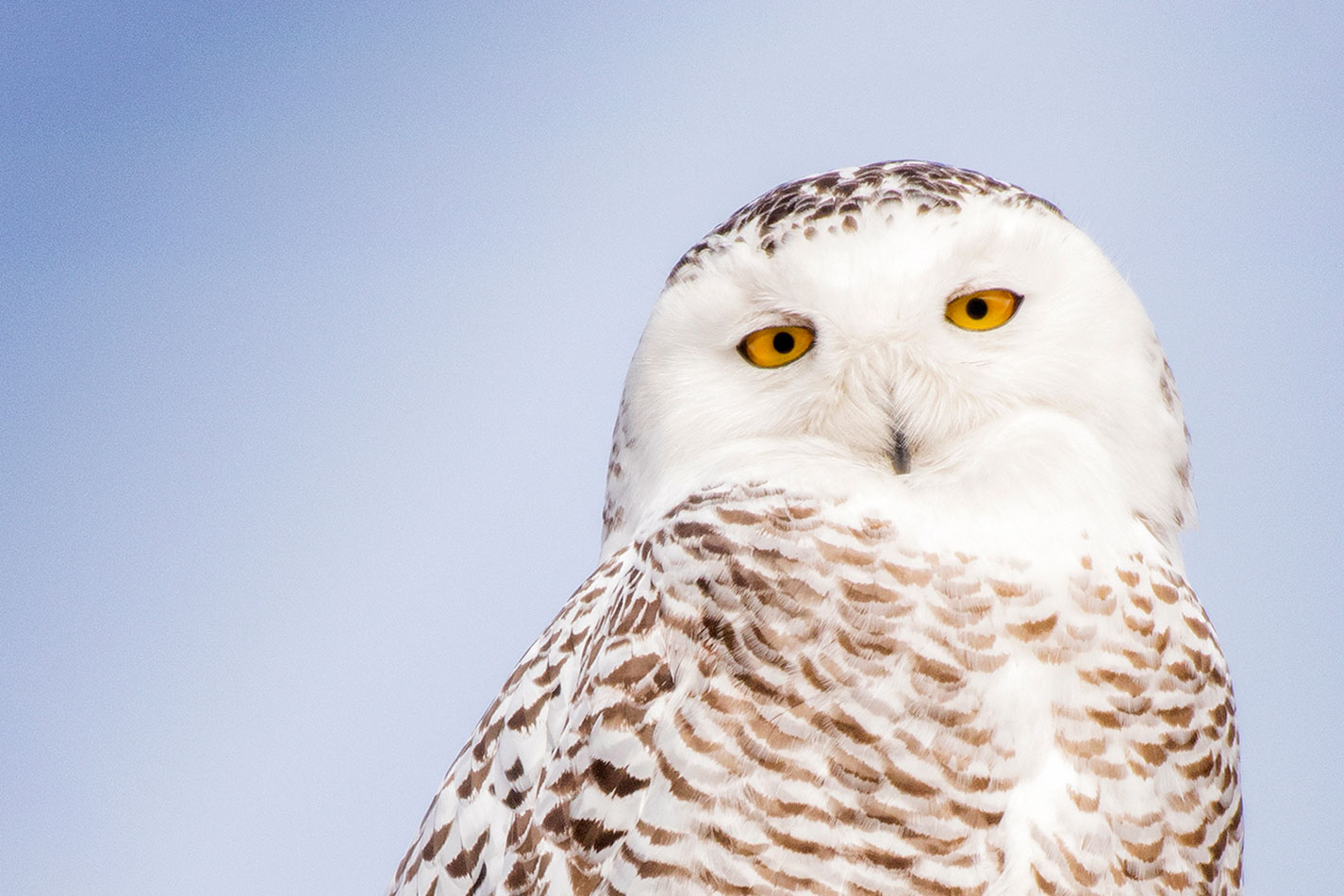
2025 Minnesota – Sax-Zim Bog, Boreal Specialties, and Owls
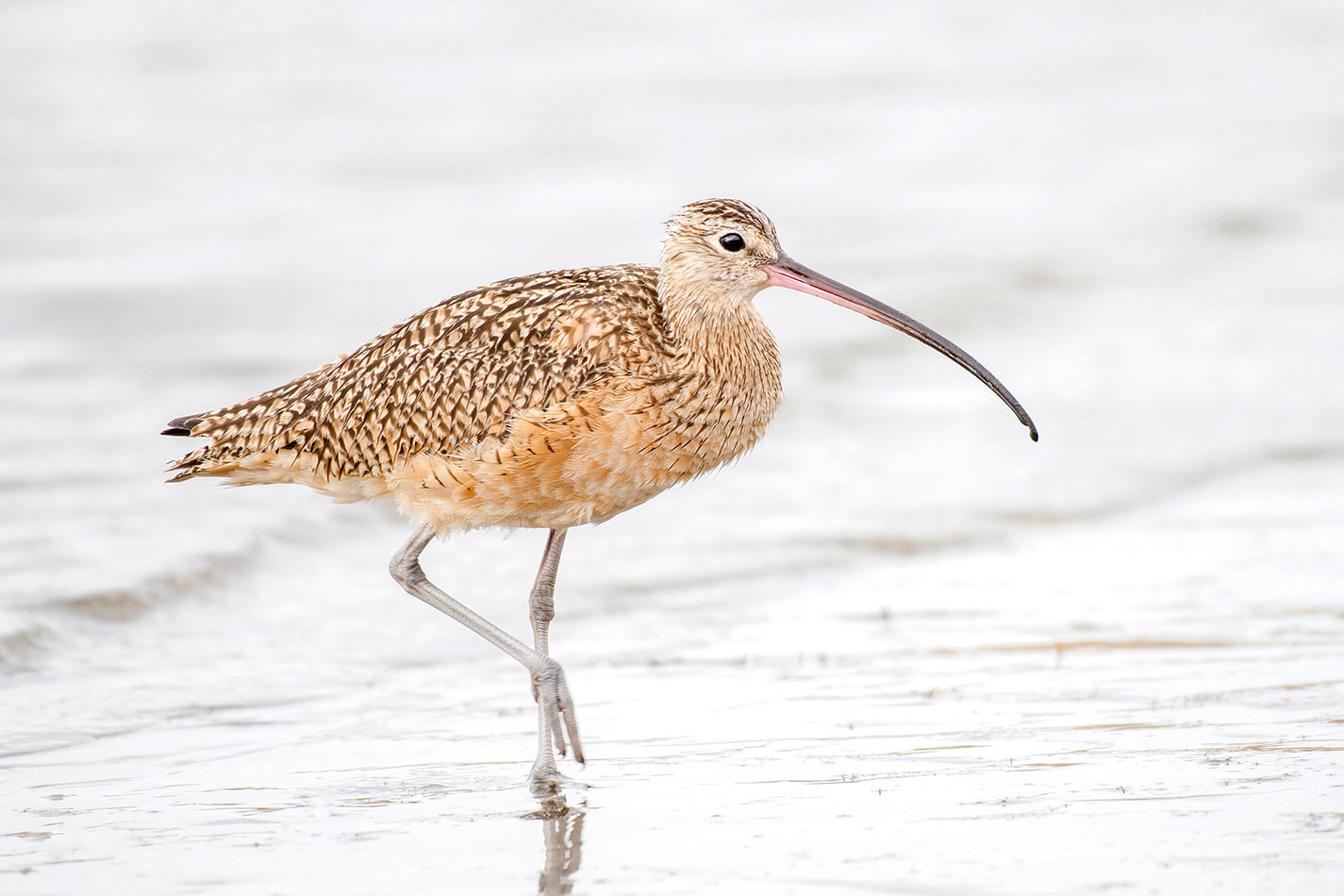
2025 California – Northern California: Mountains, Ocean and Desert
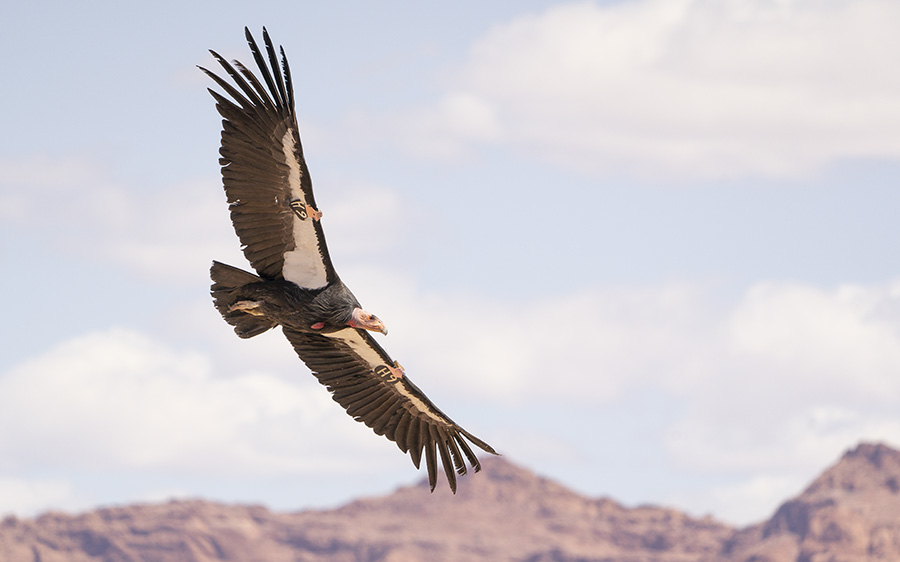
2024 Northern Arizona – The Grand Canyon and Condors
Destinations.
We go where the birds are!

Worldwide Birding Tours available through

Details on the Birding Ecotours website!
Most popular tours.
Our most sought-after destinations
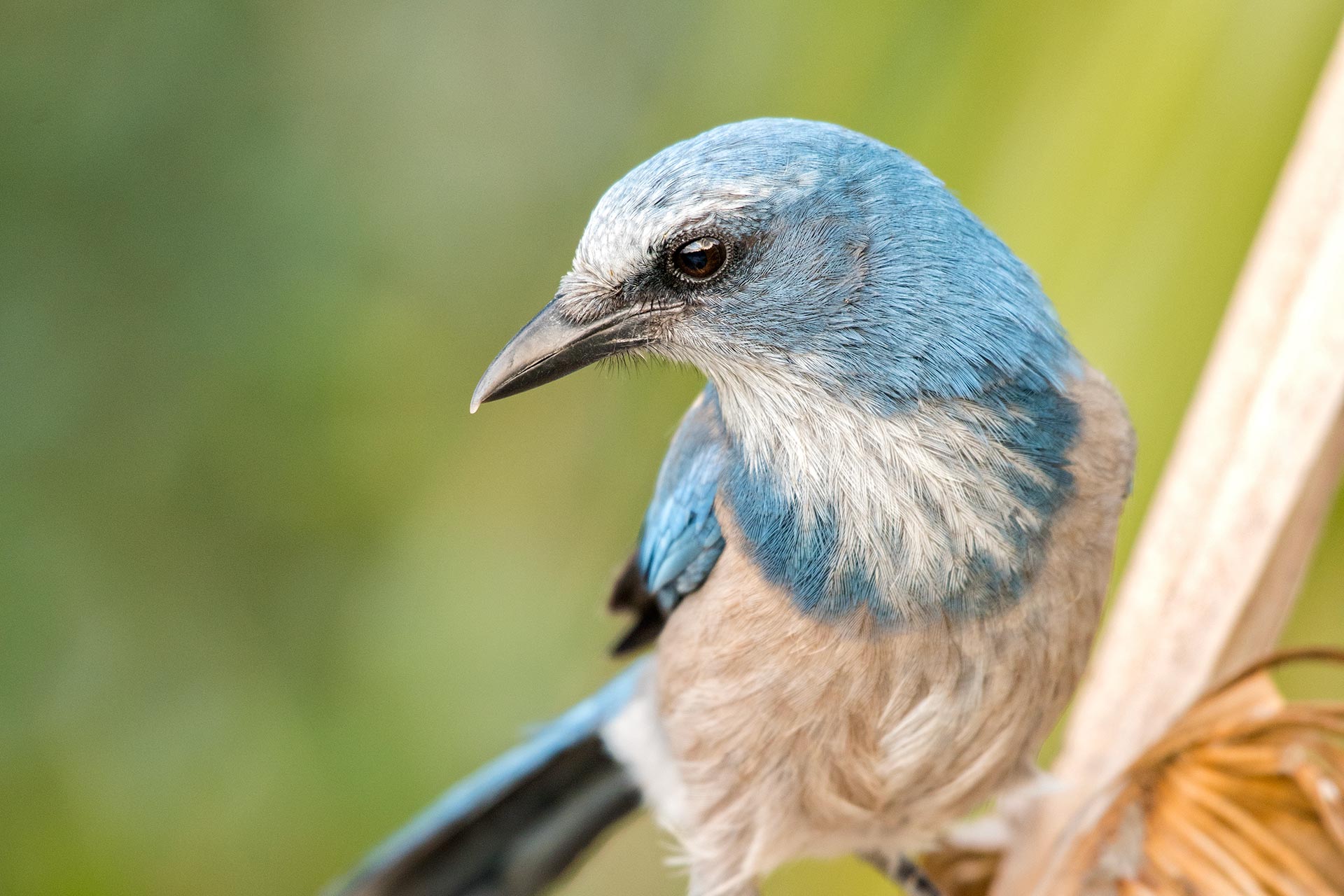
2024 Florida – South Florida Specialties and the Dry Tortugas
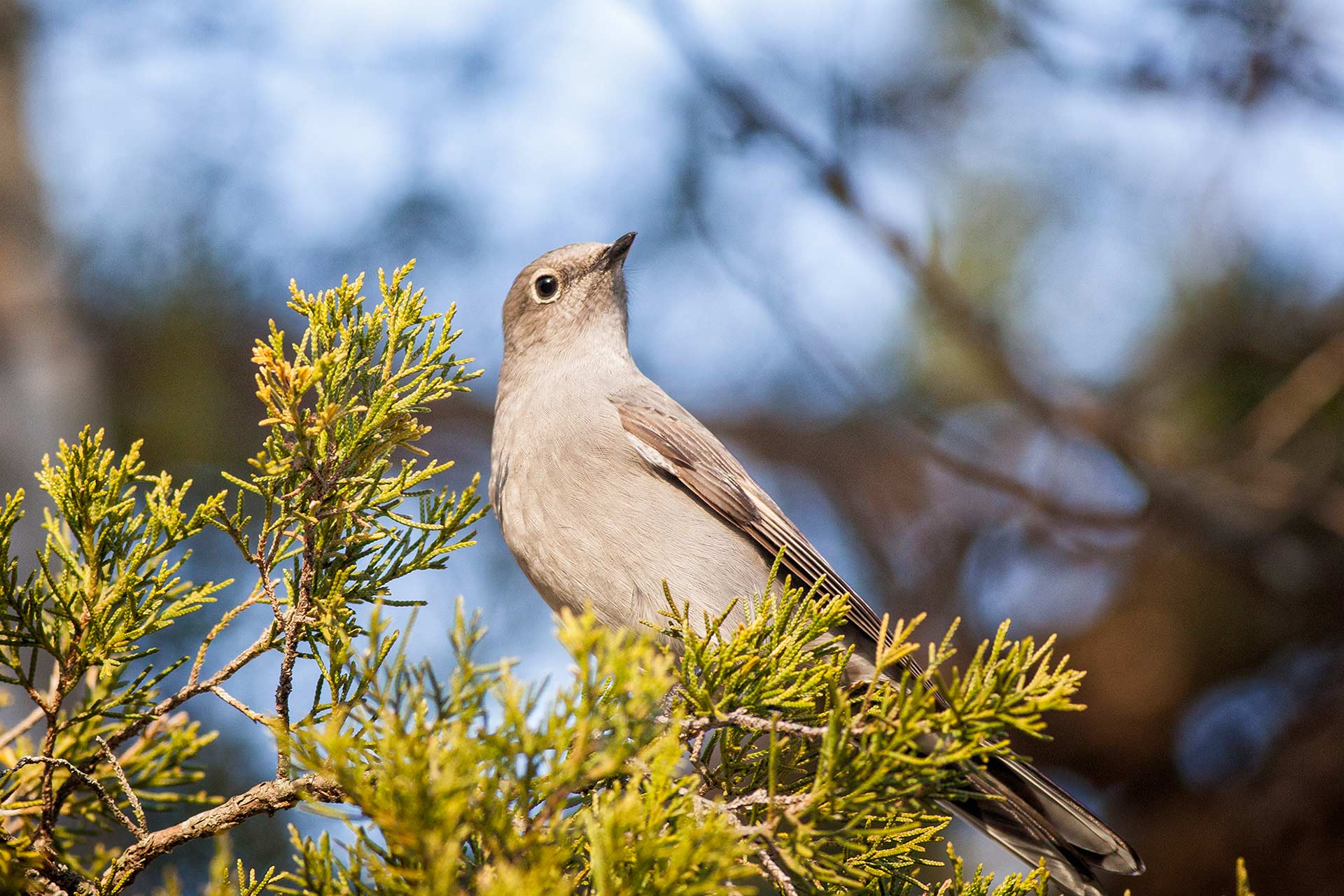
2025 Oregon – Klamath Basin & the Coast
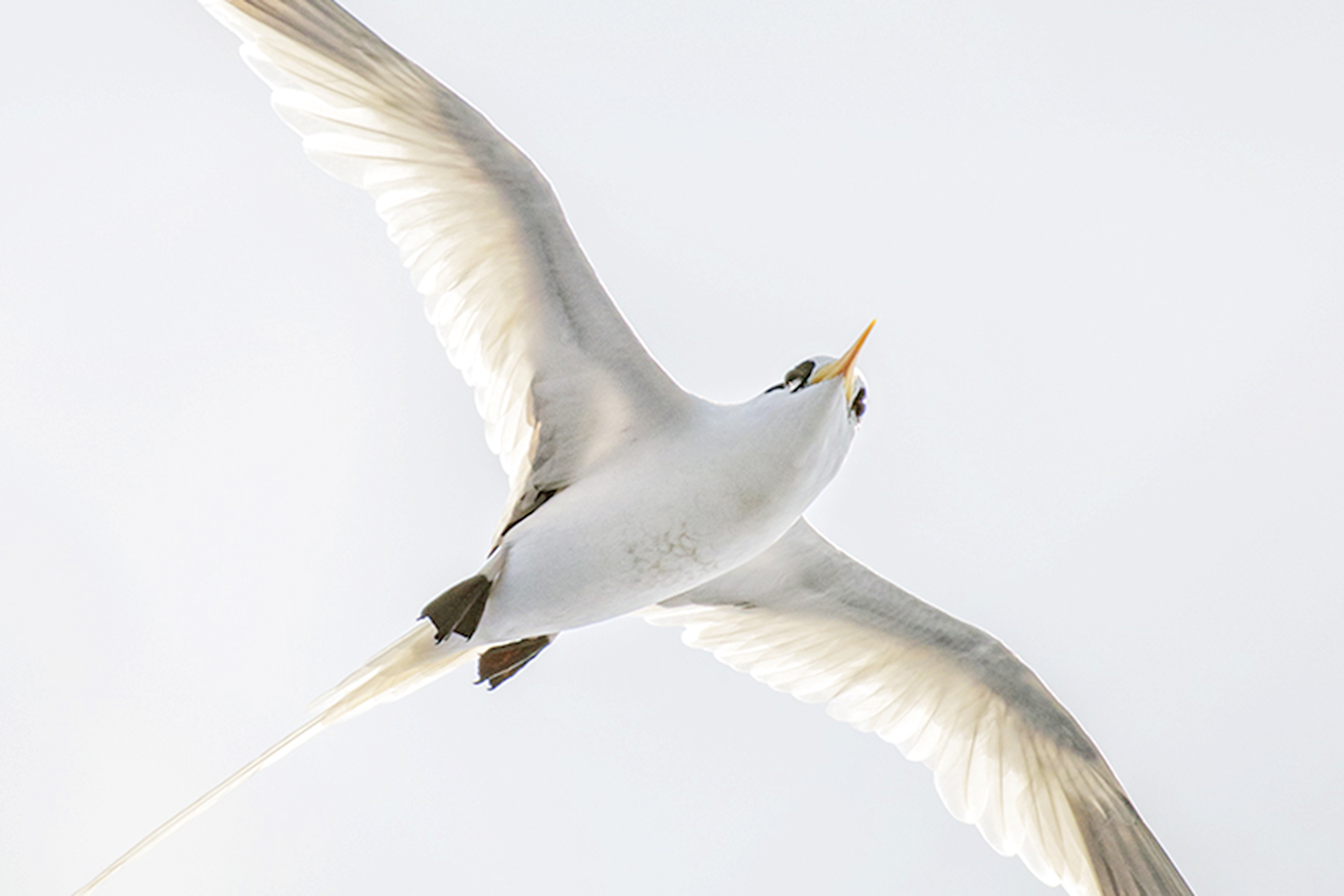
2024 North Carolina – The Outer Banks
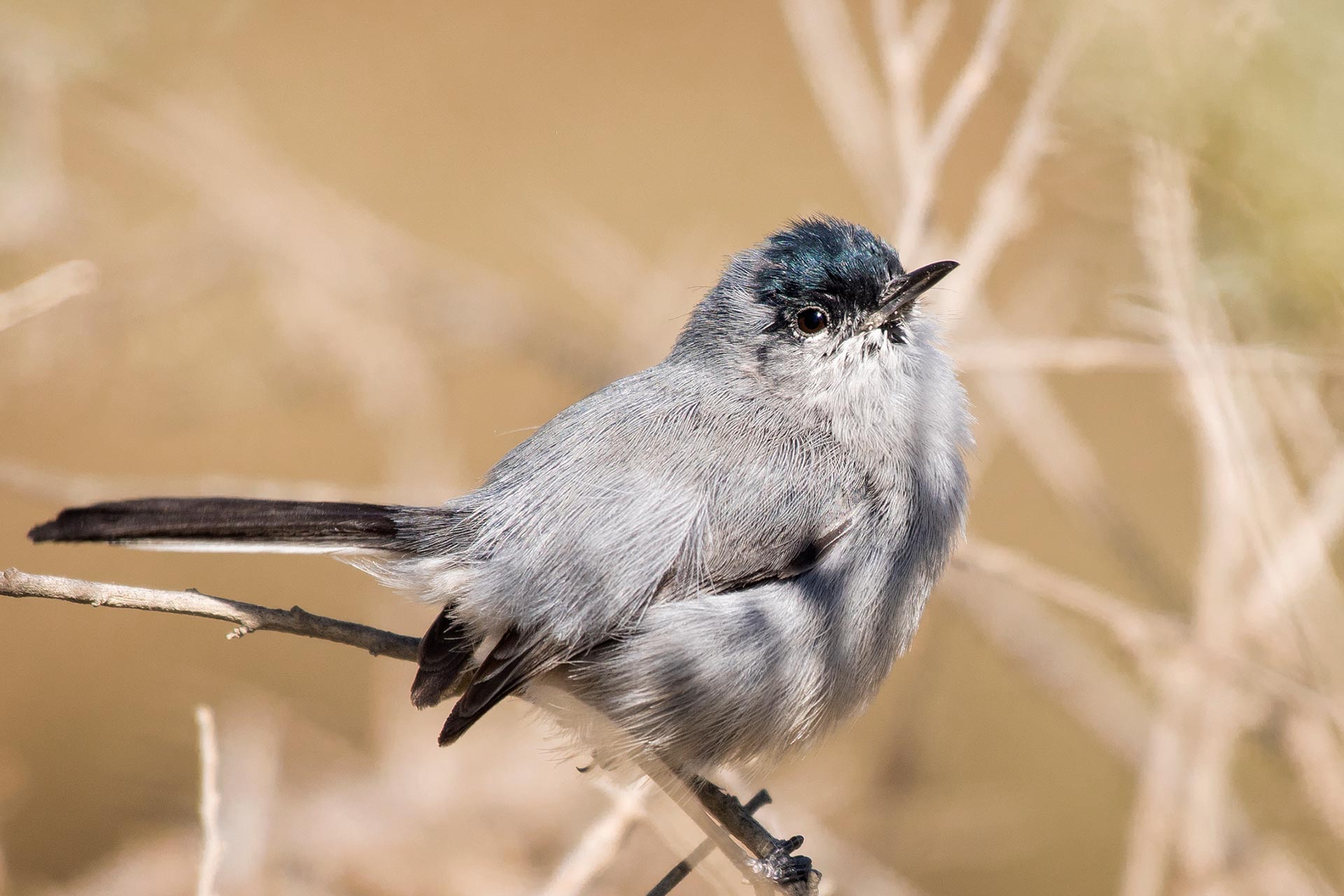
2024 California – Southern California Specialties
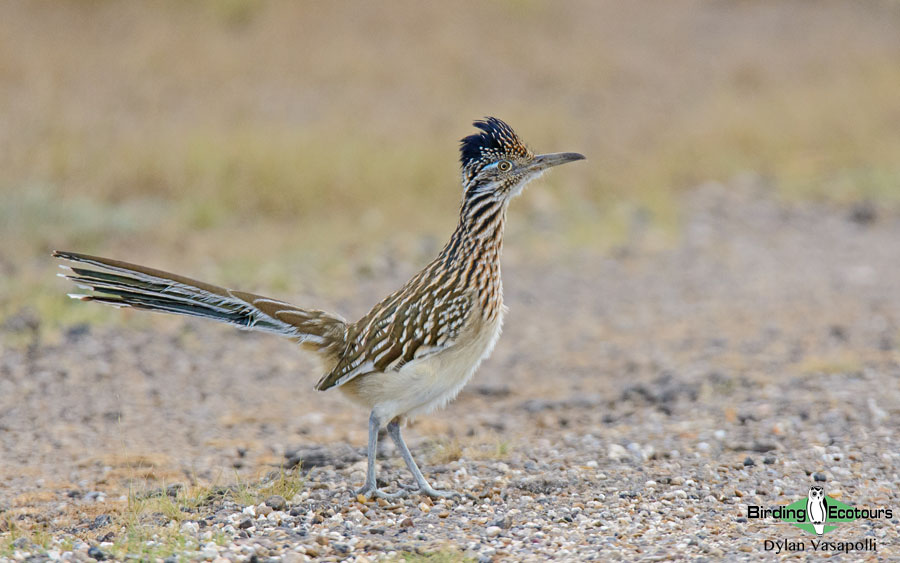
2025 Texas Winter — Whooping Cranes and Rio Grande
2024 oregon – klamath basin & the coast, meet the leaders.
Our highly trained and knowledgeable guides at your service!
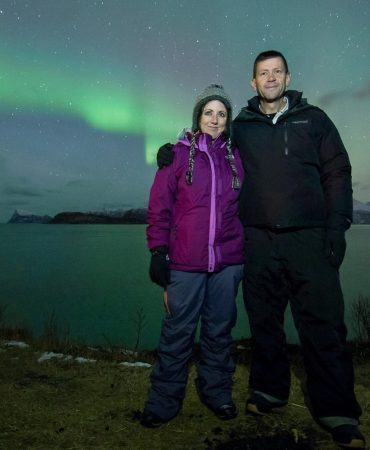
Jacob Roalef
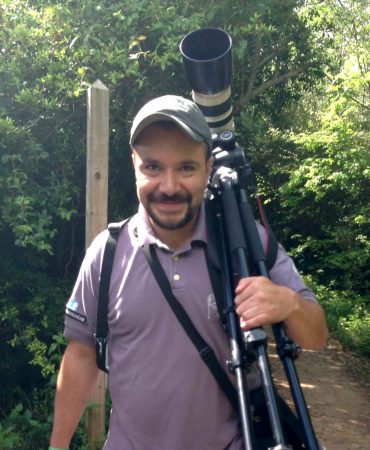
People who always support and endorse our work

Save big on upcoming tours!
Sign up to recieve discounts and the latest information on our unforgettable tours in the United States and Canada

Click through the PLOS taxonomy to find articles in your field.
For more information about PLOS Subject Areas, click here .
Loading metrics
Open Access
Peer-reviewed
Research Article
Small sight—Big might: Economic impact of bird tourism shows opportunities for rural communities and biodiversity conservation
Roles Conceptualization, Formal analysis, Investigation, Methodology, Project administration, Writing – original draft, Writing – review & editing
* E-mail: [email protected]
Affiliation International Arctic Research Center, University of Alaska Fairbanks, Fairbanks, Alaska, United States of America
Roles Conceptualization, Funding acquisition, Writing – review & editing
Affiliations National Audubon Society, Anchorage, Alaska, United States of America, Department of Environmental Science, Alaska Pacific University, Anchorage, Alaska, United States of America, Caurina Consulting LLC, Haines, Alaska, United States of America
- Tobias Schwoerer,
- Natalie G. Dawson

- Published: July 6, 2022
- https://doi.org/10.1371/journal.pone.0268594
- Reader Comments
Birdwatching is considered one of the fastest growing nature-based tourism sectors in the world. Tourists who identify as birdwatchers tend to be well-educated and wealthy travellers with a specific interest in the places they visit. Birdwatchers can bring economic resources to remote communities diversifying their economies and contribute to biodiversity conservation in areas of bird habitat with global significance. Alaska plays a critical role in understanding the link between bird conservation and bird tourism as it supports the world’s largest concentration of shorebirds and is a global breeding hotspot for hundreds of migratory species, including many species of conservation concern for their decline across their ranges. Alaska is also a global destination for birders due to the large congregations of birds that occur during the spring, summer and fall seasons. Despite its global importance, relatively little information exists on the significance of bird tourism in Alaska or on opportunities for community development that align with conservation. This study used ebird data to look at trends in Alaska birdwatching and applied existing information from the Alaska Visitor Statistics Program to estimate visitor expenditures and the impact of that spending on Alaska’s regional economies. In 2016, nearly 300,000 birdwatchers visited Alaska and spent $378 million, supporting approximately 4,000 jobs. The study describes bird tourism’s contributions to local jobs and income in remote rural and urban economies and discusses opportunities for developing and expanding the nature-based tourism sector. The study points toward the importance of partnering with rural communities and landowners to advance both economic opportunities and biodiversity conservation actions. The need for new data collection addressing niche market development and economic diversification is also discussed.
Citation: Schwoerer T, Dawson NG (2022) Small sight—Big might: Economic impact of bird tourism shows opportunities for rural communities and biodiversity conservation. PLoS ONE 17(7): e0268594. https://doi.org/10.1371/journal.pone.0268594
Editor: Ricardo Bomfim Machado, University of Brasilia, BRAZIL
Received: December 28, 2021; Accepted: May 3, 2022; Published: July 6, 2022
Copyright: © 2022 Schwoerer, Dawson. This is an open access article distributed under the terms of the Creative Commons Attribution License , which permits unrestricted use, distribution, and reproduction in any medium, provided the original author and source are credited.
Data Availability: All relevant data are within the paper and its Supporting Information files.
Funding: The authors received funding for the study through the Edgerton Foundation. The funders had no role in the study design, data collection and analysis, decision to publish, or preparation of the manuscript.
Competing interests: The authors have declared that no competing interests exist.
Introduction
Participation in U.S. nature-based outdoor recreation has increased over the past decade, continuing a long-term, upward trend [ 1 ]. Wildlife-related activities, especially wildlife viewing have increased by 20% between 2011 and 2016, outpacing participation in hunting and fishing [ 2 ]. Wildlife-related tourism can provide direct benefits to wildlife and wildlife conservation efforts if tourists engage as conservation partners during their activities within a given place [ 3 ]. As the conservation of biological diversity becomes a global priority in the face of climate change, opportunities exist to highlight the relationship between wildlife-related tourism, economic diversification for communities, and conservation action.
Among increasing wildlife-related tourists in the U.S., birdwatchers, also called birders, have seen steady increases in participation and are considered the world’s largest group of “eco-tourists” [ 4 ]. Birdwatchers can also include local residents within a community. Birding can be defined as “observation, identification, and photography of birds for recreational purposes” [ 5 ]. Birding tourism, like many wildlife tourism activities, requires interaction between a visitor and a local community and depends on the ecological integrity of a specific location to support the bird species that draw tourists to a particular place. Many of the places that draw birding tourism are also remote, requiring significant expenditures to access. Studies show that birding tourists tend to be well-educated, wealthy, and committed to their chosen tourism activity [ 6 ].
The growth and popularity of birding has provided new revenue to rural communities, regions, and countries [ 6 , 7 ]. Expenses related to wildlife viewing in the U.S. increased 29% from 2011 to 2018 [ 2 ]. In 2016, there were 45 million birders in the U.S. spending $39 billion on travel and equipment aimed at observing birds [ 6 ]. Thus, tourism experiences can be enhanced by the conservation activities within a given community that in turn strengthens a model of economic development based on ecological integrity. Growth in wildlife viewing is also happening at a time of unprecedented declines in global biodiversity [ 8 ]. Effective and immediate conservation action at a global scale is required to reduce and halt the decline [ 8 , 9 ].
Alaska, is one of the few remaining storehouses of intact habitat and complete wildlife assemblages. Thus, Alaska plays a central role in global conservation action [ 9 ]. It is home to the world’s largest concentration of shore birds and is a globally significant breeding hotspot for migratory birds. Alaska supports over one third of the world’s shorebird populations some of which breed nowhere else and are threatened by habitat loss and climate change [ 10 ].
Alaska’s high-quality bird habitat provides unmatched viewing opportunities for rare and threatened species. Over 550 species of birds have been documented across Alaska’s vast landscape [ 11 , 12 ]. Alaska also holds the most globally-significant Important Bird Areas (IBAs) of any U.S. state. Many of Alaska’s Important Bird Areas do not have conservation status and thus are not protected [ 13 ]. Yet, IBAs are essential places or habitat for birds’ nesting, foraging, and migrating [ 14 ].
While birds can be observed in Alaska year-round, the best birding season extends from May until September, overlapping with the presence of migratory birds for which Alaska serves as a globally important migratory stop-over and breeding ground [ 11 , 15 ]. Most birdwatchers visit Alaska in June followed by July and August [ 16 ]. Between 2001 and 2019, the number of users of ebird, a citizen science bird observation app, increased nine-fold for submissions in Alaska [ 17 ]. Similarly, the reported average birding effort per birder has increased from five submissions per birder in 2008 to over 40 submissions per birder in 2020 [ 17 ].
Despite increasing birdwatching trends in Alaska, relatively little is known about bird tourism’s influence on Alaska’s regional economies. Such information informs policy supporting bird habitat conservation and sustainable economic development. Nature-based tourism is often seen as a tool for habitat conservation in regions that are economically disadvantaged and where investments into e.g. local transportation infrastructure can both serve local communities and a growing visitor industry [ 18 ]. Given immediate global habitat conservation needs, Alaska can diversify local economies and attract new revenue for the remote regions of the state that remain underserved and predominately inhabited by the state’s rural Indigenous Alaska Native peoples [ 19 ].
Only one of two recent Alaska visitor surveys asked respondents about bird watching [ 20 , 21 ]. In a survey related to visitor transportation, the second most reported outdoor activity was wildlife viewing which included bird watching, with 77% of visitors reporting participation. The Alaska Visitor Statistics Program found that 9% of visitors in 2016 engaged in bird watching [ 21 ].
The past two decades saw little attention towards monitoring tourism trends across the Circumpolar North, thus few information sources exist on the importance of bird tourism to local economies [ 22 ]. Tourism research in Alaska, for example, has focused on the more populated parts of the state with small sample sizes and statistical challenges for informing the remote rural parts of Alaska [ 22 , 23 ]. These parts of Alaska are also the most likely to face the greatest vulnerabilities through potential negative impacts from large-scale economic development and are in need of sustainable economic development opportunities that meet community needs [ 22 ]. One of those community needs is retaining the ecological integrity of surrounding lands and waters that support cultural and traditional subsistence practices that to this day form the backbone of local economies [ 24 ].
This study contributes economic information about bird tourism in Alaska describing the regional economic impact of bird tourism across Alaska’s ecologically defined Bird Conservation Regions [ 15 ]. We discuss economic impacts on both remote rural and urban economies and opportunities for expanding nature-based tourism in regions with less diverse economies. The study also points towards Alaska’s role in global efforts to reduce biodiversity loss and the important role rural communities can play for positive outcomes in conservation and community development.
Alaska’s bird conservation regions
The North American Bird Conservation Initiative divides Alaska into five conservation regions ( Fig 1 ) [ 15 ]. First, the Northern Pacific Rainforest Bird Conservation Region we call Rainforest region . It encompasses all of Southeast Alaska and the Gulf of Alaska coast. This region is largely roadless with communities connected through the Alaska Marine Highway System, the state-owned ferries. The region’s forests, offshore islands, estuarine and freshwater wetlands, and rocky shorelines are a critical breeding habitat and a migration stop over for thousands of migratory bird species. Migration stopovers in estuaries along the Southeast Alaska coastline including Prince William Sound boast some of the highest numbers of shorebirds in the state of Alaska. The region’s basic sector industries include tourism, seafood, timber, and mining [ 25 ].
- PPT PowerPoint slide
- PNG larger image
- TIFF original image
Reprinted from U.S. NABCI (2020) under a CC BY license, with permission from NABCI, original copyright 2021.
https://doi.org/10.1371/journal.pone.0268594.g001
This region is known for its shorebird festivals occurring annually each spring in Homer, Yakutat, and Cordova, birdwatching hotspots that are close to rural communities ( Fig 2 ). The festivals attract both Alaska resident birders and birders from outside of Alaska celebrating the seasonal congregations of shorebirds in this region. Many of the migratory and resident bird species have high conservation status and important cultural significance, such as the Snow Goose ( Anser caerulescens ), Marbled Murrelet ( Brachyramphus marmoratus ), Chestnut backed Chickadee ( Poecile rufescens ), and Red-breasted Sapsucker ( Sphyrapicus ruber ). Black Oystercatchers ( Haematopus bachmani ), Rock Sandpipers ( Calidris ptilocnemis ), Black Turnstones ( Arenaria melanocephala ), and Surfbirds ( Calidris virgate ) are common wintering species. The region’s pelagic waters support large populations of shearwaters, storm-petrels, alcids, and Black-footed Albatross ( Phoebastria nigripes ) [ 15 ].
https://doi.org/10.1371/journal.pone.0268594.g002
The Northwestern Interior Forest Bird Conservation Region we call Interior region . The forested lowlands and uplands of the Interior region are breeding grounds for shorebirds like the Greater ( Tringa melanoleuca ) and Lesser Yellowlegs ( Tringa flavipes ), Solitary ( Tringa solitaria ), and Spotted Sandpipers ( Actitis macularius ). Alpine habitats support American Golden-Plovers ( Pluvialis dominica ) and Surfbirds ( Calidris virgate ) [ 15 ]. A large part of this region is also known as Alaska’s Railbelt region which is the only region in Alaska that is connected by roads providing the transportation infrastructure for accessing Important Bird Areas such as Denali National Park and Preserve ( Fig 2 ). It also forms the state’s population and economic center with Alaska’s largest cities Anchorage and Fairbanks and has the most diversified economy including oil and gas, tourism, mining, and transportation [ 26 ].
Further, the Arctic Plains and Mountains Bird Conservation Region we call Arctic Plains . This region is dominated by waterfowl and shorebirds where the most abundant species along the coastal plain include Northern Pintails ( Anas acuta ), King Eiders ( Somateria spectabilis ), Long-tailed Duck ( Clangula hyemalis ), Sandpipers, and Red-necked Phalarope ( Phalaropus lobatus ) [ 15 ]. Communities in this region are not connected to roads and local economies are mixed cash-subsistence economies. This region includes Utqiaġvik, a known birding destination for the large congregations of eiders that occur in the region ( Fig 2 ). The region also includes Alaska’s North Slope where most of Alaska’s petroleum resources are being developed along the coastal plain overlapping with Important Bird Areas ( Fig 2 ). The oil and gas industry includes North America’s largest oil field, the Prudhoe Bay oil fields which are connected to Alaska’s Railbelt by the Dalton Highway [ 27 ].
The fourth region is the Western Alaska Bird Conservation Region which we refer to Western Alaska . It includes all of western coastal Alaska starting with the Northwest Arctic Borough to the North and ending with the Bristol Bay Borough and Kodiak to the South ( Fig 1 ) [ 15 ]. High densities of breeding waterfowl and shorebirds are common especially during migration including Dunlin ( Calidris alpine ), Western Sandpiper ( Calidris mauri ), Red Knot ( Calidris canutus ), and Bar-tailed Godwit ( Limosa lapponica ). Wintering sea ducks such as Steller’s Eider ( Polysticta stelleri ), Harlequin Duck ( Histrionicus histrionicus ), Surf Scoter ( Melanitta perspicillata ), and Black Scoter ( Melanitta Americana ) can be found along the Alaska Peninsula coast. This region is also roadless and supports the world’s largest wild commercial salmon fishery in Bristol Bay [ 28 ]. Bristol Bay, the Yukon-Kuskokwim Delta, and Safety Sound near Nome host some of the largest congregations of waterfowl in North America, including the only nesting and breeding sites for the Emperor Goose ( Anser canagicus ), an important species for subsistence food and also a species of conservation concern due to declining populations in the face of climate change. Nome and Gambell, a community on St. Lawrence Island in the Bering Straits are the region’s birding hotspots ( Fig 2 ). The region’s mixed cash-subsistence economy is supported by commercial fishing [ 24 , 29 ].
The fifth region is the Aleutian / Bering Sea Islands Bird Conservation Region, which we call Islands region. Seabirds dominate this region with some exclusively breeding here including Red-legged Kittiwake ( Rissa brevirostris ), Least Auklet ( Aethia pusilla ), and Whiskered Auklet ( Aethia pygmaea ) [ 15 ]. The Pribilof Islands contain the largest nesting colonies of seabirds along the continental shelf of Alaska. They are an important destination for remote bird watching with St. Paul Island being the number one Alaska hotspot with over 300 bird species that have been documented ( Fig 2 ) [ 30 ]. The International Port of Dutch Harbor in the City of Unalaska is the largest fisheries port in the U.S. by volume caught, emphasizing the importance of commercial fisheries to the region besides small-scale mixed cash-subsistence economies [ 31 ].
Since the launch of Alaska ebird in May 2007, about 12,000 ebird app users reported over 358,000 bird observations [ 12 ]. Table 1 illustrates that the remote regions of Alaska have higher bird diversity indicated by the number of observable species in the Western and Islands regions while the road-connected Interior region shows higher birding effort from Alaska residents and visitors combined [ 12 ]. More detailed ebird data by census area can be viewed in S1 Table .
https://doi.org/10.1371/journal.pone.0268594.t001
The Alaska Department of Commerce, Community, and Economic Development and the Alaska Travel Industry Association partner in the Alaska Visitor Statistics Program (AVSP). The program monitors annual visitor volume using several data sources including border crossings, and airline travel. In addition, AVSP conducts a visitor survey every five years, collecting data on activities, demographics, expenditures, opinions and trip planning through intercept surveys when visitors leave Alaska at airports, ferry terminals, cruise ship docks and other exit points [ 21 ]. The data is publicly available [ 32 ].
We also used data on bird observations reported in ebird, a citizen science bird observation platform managed by the Cornell Lab of Ornithology. With data from 2007 to 2021 we calculated bird watching effort as an additional metric to the AVSP data [ 16 ]. Each record in ebird corresponds to an observed bird species and includes information on the date of the observation and the group size that the reporting bird observer was part of. For future reference, we call these birders who submit bird observations via the ebird app “ reporting bird observers .”
Birder spending
The 2016 AVSP survey included 5,147 intercept in-person interviews and 779 online surveys for a total of 5,926 respondents whose answers were then scaled to the population of visitors following AVSP methodology [ 21 ]. We used R for data management and survey data analysis to first subset the data into visitors who reported to have been bird watching on their Alaska trip ( S1 Code ). We scaled expenditures to the population level by applying market shares according to the main purpose of the trip including visiting for pleasure/vacation, visiting friends, and business travel [ 21 ]. Specifically, we calculated the scale factors to equal 438 for vacationers, 267 for visiting friends, and 278 for business travellers ( S1 Code ).
AVSP’s expenditure data includes spending by category and by location which we used to attribute expenditures to economic sectors and regions ( S2 Table ). This attribution is especially important for tourism analysis as the sector is comprised of many sub-sectors including lodging; tours, activities, and entertainment; gifts, souvenirs, and clothing; food and beverages; and rental cars, fuel, and other transportation [ 21 ]. AVSP includes expenditure category “other”, which we proportionally re-allocated across the remaining five spending categories ( S1 and S2 Tables).
For the purpose of regional economic analysis, we aggregated AVSP expenditures into regional economies consisting of groups of Alaska’s organized boroughs and census areas ( Fig 1 ). These regions roughly encompassed Alaska’s five Bird Conservation Regions as defined by the North American Bird Conservation Initiative and described in more detail in the following section [ 15 ] ( Fig 1 and S1 Table ). The aggregation allowed for a region-specific analysis of economic impacts related to each Bird Conservation Region.
To analyze the potential discrepancy between where expenditures occur and where birds are being observed and to validate the AVSP data, we used eBird data to calculate the average group size per reporting bird observer across submitted observations per region [ 16 ]. If observers did not report group size, we set group size equal to one. We then summed the average group sizes for all reporting bird observers to estimate the number of observers for each of Alaska’s five Bird Conservation Regions ( S1 Code ) (Cornell Lab of Ornithology, 2021).
Input-output analysis
We used input-output analysis to investigate the economic impacts of bird tourism [ 33 , 34 ], using IMPLAN software, a widely used input-output model that was developed by the U.S. Forest Service [ 35 ]. Our analysis measured the net changes to a regional economy that are attributable to related bird-watching visitor spending.
The five regional economic models followed roughly the outlined Alaska Bird Conservation Regions and each consisted of a subset of Alaska’s census areas and boroughs ( Fig 1 ) [ 15 ] ( S2 Table ). IMPLAN simulates interactions of 528 unique economic sectors, using data collected by federal and state government agencies. For each AVSP expenditure category we assigned the most closely related IMPLAN sector among IMPLAN’s industry and commodity accounts and then applied the estimated total expenditures to those accounts ( S3 Table ).
For each region, we paid particular attention to IMPLAN’s industry and commodity accounts that best described the expenditure category by region. For example, for lodging in the Arctic Plains and Western Alaska regions, we assigned lodging expenditures as an industry change equally proportioned among the hotels/motels and other accommodations accounts, whereas for the Interior and Rainforest regions we used a ¾ and ¼ allocation respectively ( S3 Table ) [ 33 ]. This approach acknowledged the relatively small number of hotels in the Arctic Plains and Western Alaska regions compared to other accommodations such as e.g. bed and breakfasts [ 36 ]. Similarly, we modelled expenditures on tours as a commodity change and assigned it to the scenic and sightseeing sector in the Arctic Plains and Western Alaska regions while also using the museums and other amusement accounts for the Interior region, consistent with a more diverse supply of entertainment services in the Interior region ( S3 Table ) [ 36 ].
We measured the economic impact of bird watching through the following effects [ 33 ]. Direct effects : These effects are a result of actual bird watching expenditures. For example, a visitor purchasing a $200 bird watch tour would result in a $200 direct effect of bird watching. Besides direct effects there are additional impacts that occur through economic activity generated by the initial direct expenditures. These additional impacts are also known as multiplier effects and include the following. Indirect effects : These effects arise due to linkages in the supply chain, such as lodges purchasing goods and services from local suppliers, buying inventory, paying rent, or hiring service personnel. Induced effects : These effects are a result of employee household spending. For example, when a birdwatcher purchases binoculars at a local outdoor store, some portion of that dollar amount goes toward paying the wages of the sales personnel, who then re-circulate earned wages in other ways such as purchases at a local grocery. For any retail accounts presented in our modelling, we had IMPLAN apply the retailers’ margin to visitor spending in retail stores, to correctly estimate the economic impacts in the retail sector (French, 2019).
The analysis quantified economic impacts of bird watching using the following metrics: Employment (jobs), which IMPLAN defines as the total number of all wage and salary employees and self-employed jobs in a region. This job count includes both full-time and part-time workers and can be considered as the annual average job count. It is comparable to employment numbers reported by the U.S. Bureau of Labor Statistics and the Alaska Department of Labor and Workforce Development (ADLWD) [ 35 , 37 , 38 ]. Thus, one job lasting 12 months equal two jobs lasting six months or three jobs lasting four months, where a job can be either full time or part time. Since a person can hold more than one job, the job count is not necessarily the same as the count of employed persons. Labor Income includes all forms of employment income, wages, benefits and proprietor income. The latter is important in the context of bird watching as many tour operators are independent sole proprietors. Value Added is another common measure of impact which includes labor income and payment to business owners, investors, landlords and government. It is analogous to Gross Domestic Product (GDP). Finally, we present economic model results in the form of Output which is a measure of the value of production in a calendar year, associated with all economic activity directly or indirectly related to bird watching expenditures. The IMPLAN event year was set to 2016 to be consistent with the most recent AVSP data collected in 2016. Output is commonly also referred to as annual revenue plus net inventory change [ 39 ]. All dollar values related to the presented economic impacts are in 2021 US dollars, adjusted for inflation [ 35 ]. We also used IMPLAN to estimate the generated state and local tax contributions associated with birdwatchers’ expenditures [ 35 ]. Finally, we used IMPLAN to investigate the bird tourism sector’s contributions to the local, state, and federal tax base [ 35 ].
Besides the economic impact analysis, we further investigated differences between bird-watching visitors and visitors who did not engage in bird watching using R’s survey analysis package [ 40 ] ( S1 Code ).
Birder spending and characteristics
In 2016, Alaska received an estimated 294,500 visitors who indicated to have watched birds during their visit to Alaska. This estimate compares to the only historically available estimate of 157,290 in 2001 [ 7 ], suggesting a doubling of the bird watching niche market within this time period.
On average, birders spent approximately 56% more per person than visitors who did not engage in bird watching, yet birdwatchers stated 9% lower household income compared to other visitors, likely related to the disproportionate number of retirees (54%) among birdwatchers versus other visitors (45%) ( Table 2 ). Also, birdwatchers tend to stay longer and are more active during their trips. On average, birders spent four more nights and engaged in twice as many activities than non-birders ( Table 2 ). Higher than average educational attainment and the tendency of birders to be middle-age or older was reflected in AVSP and in a nationwide survey of birders, suggesting that the limited data we used was representative of birdwatchers in general [ 6 ].
https://doi.org/10.1371/journal.pone.0268594.t002
In 2016, four in every five birdwatchers arrived in Alaska independently (not on cruise ships), illustrating that most birdwatchers are independent travellers, reaching Alaska on various transportation modes, other than cruise ships. Independent travellers are also more likely to reach remote rural areas compared to other visitors [ 7 , 41 ].
In 2016, the estimated Alaska bird tourism expenditures amounted to $378 million in 2016 U.S. dollars with the majority (28%) of total spending going towards tours and activities, followed by lodging (22%), food and beverages (20%), gifts and souvenirs (16%) and transportation (15%) ( Table 3 ).
https://doi.org/10.1371/journal.pone.0268594.t003
Among Alaska’s Bird Conservation Regions, the Rainforest region received the most birders and had the largest spending with $184.2 million, almost half of the statewide total. Interesting to note, birdwatchers spent more on tours and activities in this region than in any other Alaska region, amounting to $71 million or 39% of the regional total. The bulk of birdwatching tours in this region are one-day trips related to the cruise ship industry.
Western Alaska also has a high proportion of spending in the tours and activities category, indicating that these two regions may have relatively well-developed bird tourism sectors compared to the other regions in Alaska. Nome has been a known birding destination since the mid 1980’s and independent birding travel is relatively easy due to a small road network and Nome being a larger community with existing infrastructure that can support a growing birding industry such as lodging. Also, with an increasingly ice-free Bering Strait in summer months, the community is seeing increased visitation by cruise ships [ 42 ].
The Interior region’s bird tourism sector is similar in size to the sector in the Rainforest region both based on the estimated spending and the number of reporting bird observers estimated using ebird data. Birders visiting the Interior spent most on lodging (26%) and less on tours and activities, only a third of what birders spent on tours and activities in the Rainforest region.
Birders visiting the Arctic Plains region had a similar spending pattern to those visiting the Interior. Most birding in the Arctic Plains is accessed via the Dalton Highway, thus individual transportation by car may result in smaller group sizes and a more individualized birding experience in the Arctic Plains and Interior regions ( Table 3 ).
Unfortunately, no data were available for the Islands region but ebird data suggests that the bird tourism sector in this region is likely twice the size of the Arctic Plains region’s birding sector ( Table 3 ). The Island region also has the largest birder group size showing that birding is relatively organized. The primary reason for this fact is the daunting logistics and expense to travel to this very remote region of Alaska where air transportation is also highly dependent on weather. Group travel is therefore an advantage when traveling to areas like Gambell on St. Lawrence Island, Adak in the Aleutian Chain, or St. Paul in the Pribilof Islands ( Fig 2 ). According to several sources, ornithologists rank the Pribilof Islands as one of the world’s premier birding locations, and because of this birding attention, these islands have been referred as “The Galapagos of the North” [ 43 ]. Due to data limitations described earlier, little information is available on how much economic impact bird tourism generates in this region ( Table 3 ).
Our results also underline the limitations of AVSP data and tourism surveys that are not targeting certain segments of the market such as independent travellers. Most travellers to the Islands region are considered independent travellers even though they may be joining organized trips with local guides.
Economic impacts
A total of 3,273 annual average statewide jobs are directly associated with the expenditures of bird tourism and an additional 1,100 jobs stem from businesses supporting and supplying goods and services to the bird tourism sector ( Table 4 ). The direct employment alone compares to the direct employment of Alaska’s mining industry, which in 2020 had an annual average job count of 3,111 or Alaska’s telecommunications sector with 3,500 direct jobs [ 37 ]. Half of Alaska’s total jobs that are linked to bird tourism are associated with the Interior region’s bird tourism sector, followed by the Rainforest region (44%), Western Alaska (6%) and Arctic Plains (<1%) ( Table 5 ).
https://doi.org/10.1371/journal.pone.0268594.t004
https://doi.org/10.1371/journal.pone.0268594.t005
The majority (1,079) of the 4,378 total jobs generated by bird tourism were in the food services sector followed by 700 annual average jobs in the scenic and sightseeing transportation and support services sector ( Table 6 ). Jobs in the lodging and retail sectors are also among the top-ranking employment generators yet show much lower effects on labor income due to the lower wages in these sectors. A national survey of birdwatchers found similar economic impacts across these sectors, underlining the significance and representativeness of the results [ 6 ].
https://doi.org/10.1371/journal.pone.0268594.t006
The bird tourism sector also generated a total of $204 million in wages, salary, and benefits associated with the forementioned jobs ( Table 4 ). Its contribution to Alaska’s GDP as measured through value added, amounted to $326 million, roughly 1% of Alaska’s current-dollar GDP ( Table 5 ). This result is consistent with the larger outdoor industry contributing 3.9% to the overall Alaska economy, twice the national average and underlining that Alaska compared to other U.S. states relies more on the outdoor recreation industry [ 44 , 45 ]. Regionally, the bird tourism sector contributes most to the regional economy in the Rainforest region (2%) followed by Western Alaska (1%), Interior (0.5%) and Arctic Plains (<0.1%). This result further supports the previously mentioned regional differences and highlights opportunities for growth in Western Alaska and the Arctic Plains region ( Table 5 ).
The total value of all economic activity associated with Alaska’s bird tourism sector amounted to $584 million ( Table 4 ), roughly equivalent to the five-year annual average harvest value fishers receive for commercially caught salmon in Alaska which between 2015 and 2020 equalled $607 million [ 46 ].
Bird tourism also generated $47.8 million in state and local tax contributions in form of corporate dividends, social insurance, excise taxes, local sales and property taxes, severance taxes, corporate profits, fines and fees, and motor vehicle registrations. In addition, federal tax contributions including social insurance, excise taxes, customs duty, corporate profits tax and personal income taxes amounted to $39.5 million.
This study examined location-based tourism expenditures and used input-output modelling to demonstrate the economic impacts of bird tourism on Alaska’s economy. The study provides a one-year snapshot about employment and income generated by bird tourism and shows how this economic impact varied across Alaska regions. Thus, the approach is different from ecosystem service valuation that estimates net economic value changes [ 47 ]. Nature-based tourism is a growing economic sector that contributes to economic diversification [ 22 , 45 , 48 ]. Research continues to suggest that new tourism development, if designed with community insights, can also become sustainable and relevant in new ways within communities where tourism brings visitors and economic benefits [ 49 ].
We find the largest opportunities for sustainable economic growth through the development of nature-based tourism in the remote and underserved parts of Alaska. In regions with higher poverty rates, niche market development can play an important role for growing and diversifying the economy. Bird tourism results in either new revenues to the region that otherwise would not have occurred, or revenues that in the absence of bird habitat conservation and associated visitation of healthy bird populations, would be lost. Especially in the remote regions, bird tourism provides critical cash flow and rare employment and income opportunities for local communities interested in diversifying their local economies [ 36 ]. Our results illustrate that bird tourism brings substantial amounts of new money to Alaska’s economy, providing jobs, income, and government revenue.
The presented economic impacts are likely a lower bound to the true economic impacts of bird tourism in Alaska. Part of the reason for this is the way in which tourism data are collected [ 23 ]. For example, the impacts of the COVID-19 pandemic halted most industrial-scale tourism in Alaska driven by the cruise ship industry, but independent travellers found ways to bolster tourism in some regions of the state [ 50 ]. Our results indicate that current tourism data collection efforts are particularly challenging for quantifying birding tourism because many Alaska birding destinations are not accessible by cruise ship and instead are more likely accessed by independent visitors.
Historically, most studies of Alaska tourism relied on AVSP, designed to survey the cruise-ship-related portion of Alaska visitors [ 51 – 53 ]. As a result, the independent traveller segment of the tourism sector who is more likely to visit rural and remote areas of the state has small sample sizes because the total number of visitors to these areas is small [ 23 ]. Thus, the independent traveller segment is underrepresented in AVSP hampering more comprehensive analysis of niche market development such as bird tourism. More in depth coverage of independent travellers would have been able to capture bird tourism spending in Alaska’s high-end birding destinations located in the Islands region [ 23 , 54 , 55 ].
To the contrary, the AVSP data does not distinguish between primary purpose birdwatching and incidental bird observing [ 6 , 21 ]. Since there was no such distinction, we attributed all spending by bird watching visitors to bird tourism, regardless of how many other activities birders engaged in and regardless of underlying unknown motivations to come to Alaska in the first place. Further research related to Alaska’s independent traveller segment, travelers’ behavior and motivations, and visitation to the remote rural parts of the state can provide more detailed insights for policy aimed at fostering sustainable tourism-related community development [ 22 , 23 ].
Nature-based tourism and development
Historically, rural Alaska has had limited economic opportunities and high poverty rates [ 19 ]. It is also predominately inhabited by Alaska’s indigenous peoples who continue to have strong cultural and traditional ties to the land, practicing a subsistence lifestyle [ 24 ]. Our example of bird tourism provides a case study for how various regions across Alaska are taking advantage of nature-based tourism opportunities with the greatest potential for growth in the Arctic Plains, Western Alaska, and Islands regions.
Development and growth of the nature-based tourism sector can be fostered through sustainable infrastructure investments and borrowing strategies from other Alaska Regions. For example, the virtual Southeast Alaska Birding Trail links birding destinations along the Alaska Marine Highway by offering a virtual guide to birding hotspots across 18 remote Southeast Alaska communities [ 56 ]. The collection of sites mostly chosen by local birders along a pre-described route, is designed to maximize viewing opportunities for birders and to advance birding experience and visitor satisfaction [ 6 , 7 , 41 ]. We note, birding trails are not directly associated with physical built trail infrastructure but can utilize local trails that are already in place to facilitate access to birding hotspots. Given demand for bird watching grows, additional built infrastructure such as lodging and transportation infrastructure.
Further, developing niche tourism markets also diversifies the overall tourism sector, minimizes the effects of seasonality, and reduces visitor congestion elsewhere by distributing more visitors to remote regions that often are economically disadvantaged [ 41 ]. Local communities play a central role in driving nature-based tourism opportunities in these regions, making sure that outcomes are environmentally sensitive and culturally appropriate with a fair distribution of social, environmental, and economic benefits across local stakeholders [ 57 , 58 ]. Such approaches are known as regenerative tourism and go beyond sustainability by “contributing to the proactive regeneration of communities, cultures, heritage, places, and landscapes [ 57 ].” If co-designed with local communities, regenerative approaches to nature-based tourism development can lead to social and economic empowerment of indigenous communities and sustainable long-term outcomes [ 58 , 59 ].
Nature-based tourism and biodiversity conservation
Nature-based tourism is also widely viewed as an important conservation tool for engaging and partnering with indigenous communities, especially for those who seek to diversify and grow their generally small economic base [ 9 , 18 , 60 , 61 ]. To reduce the current pace of global biodiversity loss, effective conservation efforts require a rapidly deployable all hands on deck approach that relies on indigenous knowledge and leadership from communities often inhabiting or owning critical conservation lands [ 62 ]. For birds and other migratory species especially, efficient conservation strategies require habitat connectivity and thus conservation action at large scale [ 63 ].
Globally, Alaska plays a significant role in such biodiversity conservation, due to its vast tracts of intact habitat supporting complete wildlife assemblages and the world’s largest concentration of shore birds [ 9 ]. In addition, Alaska’s indigenous population inhabits much of the wild lands required for achieving global biodiversity targets and is one of the largest landowners in Alaska. The Alaska Native Claims Settlement Act (ANCSA) established twelve Alaska Native regional corporations and over 200 local village corporations owning approximately 10% of Alaska’s land mass. Alaska is also home to 229 federally recognized tribes primarily inhabiting Alaska’s remote rural areas.
Since much of these areas are without protection, the support of private landowners for conservation will largely depend on the received financial benefits [ 64 ]. Effective conservation action to reduce biodiversity loss must retain the most-intact habitats and work more closely with rural communities [ 65 ]. Synergistic projects that tie conservation targets with nature-based tourism projects provide alternative income sources for rural communities and can be conservation-friendly alternatives without degrading natural capital compared to resource extraction, for example [ 66 ]. Indigenous place-based knowledge will be critical for co-designing projects where conservation outcomes are effective but also financially sustainable for communities [ 58 , 67 ].
Conclusions
Birding tourism illustrates the growing and significant economic opportunities for nature-based tourism in rural and remote regions of Alaska. Most of Alaska’s tourism is focused on cruise ship destination tourism. Even though Alaska is home to more national park land than any other state, few national parks and other protected areas are visited because of their remoteness. Birding tourism illustrates one of many nature-based tourism activities that can inspire independent travellers to seek out new destinations in Alaska, expanding the economic footprint of tourism across the state.
Rural and remote regions of Alaska are predominately inhabited by indigenous peoples who have had limited economic opportunities but are surrounded by vast tracks of increasingly rare wildlife habitat of global significance. Our results showed that bird tourism provides critical cash flow and rare employment and income opportunities for local communities, presenting viable alternatives to resource extraction. The study discussed the need for partnerships with indigenous land holders centered around nature-based tourism opportunities tied to conservation for reducing global biodiversity loss. Alaska’s largely intact wilderness areas and indigenous land holders and federally recognized tribes play a critical role for global biodiversity conservation and improved stewardship of the globe’s wilderness areas.
Supporting information
S1 table. ebird data by census area and nabci region..
https://doi.org/10.1371/journal.pone.0268594.s001
S2 Table. IMPLAN regions used in the input-output model corresponding to NABCI regions and census areas.
https://doi.org/10.1371/journal.pone.0268594.s002
S3 Table. Proportions allocating AVSP spending categories to IMPLAN sectors by regional model.
https://doi.org/10.1371/journal.pone.0268594.s003
S4 Table. Detailed input-output modelling results by region and impact type.
https://doi.org/10.1371/journal.pone.0268594.s004
S5 Table. Survey instrument.
https://doi.org/10.1371/journal.pone.0268594.s005
S1 Dataset.
https://doi.org/10.1371/journal.pone.0268594.s006
S1 Code. R-code used for AVSP data analysis and ebird data.
https://doi.org/10.1371/journal.pone.0268594.s007
Acknowledgments
This publication would not have been possible without the 5,917 respondents to the Alaska Visitor Statistics Program survey conducted in 2016. We thank Aaron Lang for editing and helpful insights into the bird tourism sector in Alaska. We are thankful to Brad Meiklejohn for providing valuable insights about Alaska’s Important Bird Areas and top bird watching destinations. Dr. Katherine Christie and Zak Pohlen contributed to describing seasonality using ebird data. Victoria Elmore prepared Fig 1 . We would also like to thank two anonymous reviewers for their constructive feedback.
- 1. White EM, Bowker JM, Askew AE, Langner LL, Arnold JR, English DBK. Federal Outdoor Recreation Trends: Effects on Economic Opportunities. Portland, OR: USDA Forest Service Northwest Pacific Research Station; 2016. Report No.: November. Available: https://www.fs.fed.us/pnw/pubs/pnw_gtr945.pdf .
- 2. USFWS. 2016 National Survey of Fishing, Hunting, and Wildlife-Associated Recreation. Washington, D.C.: U.S. Department of the Interior, U.S. Fish and Wildlife Service, and U.S. Department of Commerce, U.S. Census Bureau; 2018 p. 144. Report No.: FHW/16-NAT. Available: https://wsfrprograms.fws.gov/Subpages/NationalSurvey/nat_survey2016.pdf .
- View Article
- Google Scholar
- 10. ASG. Alaska Shorebird Conservation Plan, Version III. Anchorage, AK: Alaska Shorebird Group; 2019 p. 149. Available: https://www.fws.gov/alaska/mbsp/mbm/shorebirds/plans.htm .
- 11. West GC. Birder’s Guide to Alaska. American Birding Association; 2002.
- 15. U.S. NABCI. Bird Conservation Regions Map. Washington, D.C.: U.S. North American Bird Conservation Initiative Committee; 2020. Available: https://nabci-us.org/resources/bird-conservation-regions-map/ .
- 16. Cornell Lab of Ornithology. eBird Basic Dataset. Ithaca, NY; 2021. Available: https://ebird.org/data/download .
- 18. World Bank. Tools and Resources for Nature-Based Tourism. Washington, DC: World Bank; 2020. Available: https://openknowledge.worldbank.org/bitstream/handle/10986/34433/Tools-and-Resources-for-Nature-Based-Tourism.pdf?sequence=1&isAllowed=y .
- 20. Fix P, Wedin A, Shaw J, Petersen K, Petrella M. Collaborative Visitor Transportation Survey: Results from Summer 2016 Alaska Survey. Fairbanks, AK: University of Alaska Fairbanks School of Resources and Extension; 2018. Available: http://volpe-public-lands.s3-website-us-east-1.amazonaws.com/flma_lrtp_cvts/documents/AK%20CVTS%20FINAL%20REPORT.pdf .
- 21. McDowell Group. Alaska Visitor Statistics Program: Summer 2016. Juneau, AK: Alaska Department of Commerce and Community and Economic Development (DCCED), Division of Economic Development; 2017 p. 295. Available: https://www.alaskatia.org/wp-content/uploads/Full-AVSP-VII-Report.pdf .
- 23. Fay G, Colt S, White E. Data survey and sampling procedures to quantify recreation use of national forests in Alaska. Portland, OR: U.S. Department of Agriculture, Forest Service, Pacific Northwest Research Station; 2010 p. 59. Report No.: PNW-GTR-808. Available: https://www.fs.fed.us/pnw/pubs/pnw_gtr808.pdf .
- 24. Magdanz JS, Greenberg J, Little J, Koster D. The Persistence of Subsistence: Wild Food Harvests in Rural Alaska, 1983–2013. Rochester, NY: Social Science Research Network; 2016 May. Report No.: ID 2779464. Available: https://papers.ssrn.com/abstract=2779464 .
- 28. Knapp G, Guettabi M, Goldsmith OS. The Economic Importance of the Bristol Bay Salmon Industry. Anchorage, AK: UAA Institute of Social and Economic Research; 2013 p. 86. Report No.: April.
- 34. Stynes D. Approaches to Estimating the Economic Impacts of Tourism; Some Examples. East Lansing, MI: Michigan State University; 2011 Oct. Available: https://www.researchgate.net/publication/254057208_Approaches_to_Estimating_the_Economic_Impacts_of_Tourism_Some_Examples .
- 41. Acorn. Developing a Niche Tourism Market Database for the Caribbean: 20 Niche Market Profiles. Acorn Consulting; 2008 p. 90. Available: https://www.onecaribbean.org/wp-content/uploads/NicheMarketsDatabase.pdf .
- 43. Goldman MS, Devine LM, Knight EJ, Padula VM, Huffman DP. Marine Ecological Atlas of the Pribilof Islands. Anchorage, AK: Audubon Alaska; 2020.
- 45. Klouda N. Outdoor Recreation Impacts and Opportunities. Anchorage, AK: University of Alaska Anchorage Center for Economic Development; 2019 p. 62. Available: https://ua-ced.org/blog/2019/3/13/outdoor-recreation-in-alaska-impacts-and-opportunities .
- 48. Dugan D, Fay G, Griego H, Colt S. Nature-Based Tourism in Southeast Alaska. Anchorage, AK: Institute of Social and Economic Research; 2009 p. 96. Report No.: March. Available: http://www.iser.uaa.alaska.edu/Publications/workingpapers/WP20091_SEnbt_final.pdf .
- 51. McDowell Group. Tourism Infrastructure Needs Study Matanuska-Susitna Borough Tourism Infrastructure Needs Study. Matanuska-Susitna Borough; 2008. Report No.: June. Available: http://www.matsugov.us/docman/doc_download/453-mcdowell-tourism-infrastructure-study-2008 .
- 52. McDowell Group. Economic Impacts of the Cruise Industry in Alaska, 2011. Juneau, AK; 2013 p. 23. Available: http://www.mcdowellgroup.net/wp-content/uploads/2015/12/CLIA-AK-Cruise-Impacts-7_15.pdf .
- 53. McDowell Group. 2017 Economic Impact of Alaska’s Visitor Industry. Juneau, AK; 2018 p. 24. Available: https://www.mcdowellgroup.net/wp-content/uploads/2018/11/visitor-impacts-2016-17-report.pdf .
- PubMed/NCBI
- 66. Hall CM, Boyd S. 1. Nature-based Tourism in Peripheral Areas: Introduction. In: Cooper C, Hall CM, Dallen T, editors. Nature-Based Tourism in Peripheral Areas: Development or Disaster? Channel View Publications; 2004. pp. 3–18. Available: https://www.degruyter.com/document/doi/10.21832/9781845410025-003/html .

- Market information
- Birdwatching Tourism
- Market Potential
- Share this on:
The European market potential for birdwatching tourism
Birdwatching is becoming increasingly popular among European tourists. The United Kingdom is the largest European source country for birdwatching tourism, followed by the Netherlands and Germany. Birdwatching tourism attracts experienced travellers and offers spacious destinations. Therefore, the expectation is that this niche market will recover relatively fast when COVID-19 restrictions decrease. Birdwatching offers many opportunities, including younger travellers becoming more interested and the increased possibilities for marketing efforts on social media and other internet platforms.
Contents of this page
- Product description
- What makes Europe an interesting market for birdwatching tourism?
- Which European countries offer most opportunities for birdwatching tourism?
- Which trends offer opportunities in the European birdwatching tourism market?
1. Product description
Birdwatching tourism or “avitourism” refers to travel where the main purpose is to observe birds in their natural habitat. Birdwatching, or “birding’’, refers to finding, observing, and identifying birds for educational and enjoyment purposes. It is very much related to nature tourism and adventure tourism. Therefore, many tour operators offering birdwatching tourism also offer nature and adventure-based trips. Birdwatching tourism is divided into three specialist niches: casual birding, enthusiastic birding, and hardcore birding.
Table 1: Specialist niches with example tour operators
Activitis catered to casual and enthusiastic birders are more accessible to offer for tour operators, because casual and enthusiastic birders have a wider range of interest than birding alone and are less specific in their demands. Hardcore birders are very knowledgeable and have very specific demands, especially about the birds they want to see.
- Read the CBI studies on nature tourism , adventure tourism , and wildlife tourism .
- Inform yourself on the niches available in tourism to be able to make a clear choice. CBI offers an infographic which gives a clear overview on all segments and niche markets in tourism.
2. What makes Europe an interesting market for birdwatching tourism?
Globally, around three million international trips are dedicated to birdwatching every year. Birdwatching tourism has been a rapidly growing market, with the largest share coming from Europe. At least 20% of European travellers that engage in wildlife tourism are interested in birdwatching activities as well. Birdwatching is a popular hobby among Europeans, and this birdwatching tourism is expected to increase when travel restrictions due to COVID-19 are lifted.
Already 37% of all European tour operators offer birdwatching tourism for casual birders. Although the birdwatching market is growing, most tour operators in Europe consider birdwatching tourism as a sub-category of wildlife tourism. Most tour operators do not provide trips dedicated to birding specifically, but consider birdwatching as a potential activity. European tour operators that provide birdwatching activities usually include them in wildlife tourism or ecotourism trips.
Africa and the United States are popular destinations for European birdwatchers. Asia and South America are relatively new destinations for birdwatchers, but are experiencing rapid growth. While most European birdwatchers go on organised tours, there are also birdwatchers that plan their own trip without a tour operator.
COVID-19 travel restrictions and safety measures
Due to COVID-19 travel restrictions, the tourism industry has decreased tremendously. Because birdwatching tourism uses spacious destinations, it is expected to recover relatively fast. When travel restrictions are lifted, European tourists are likely to travel to destinations that feel safest in regard to COVID-19. For example, small chalets in national parks are preferred over hotels and large group accommodations.
Europeans with a medium to high income are expected to travel first as travel restrictions are lifted. Birdwatchers have engaged more in solo birding, or birding with their spouse during the COVID-19 pandemic. They might want to travel in smaller groups or alone at first when the travel restrictions are lifted.
Technological tools and platforms
Apps, birdwatching platforms like fatbirder.com , eBird , and social media platforms like TripAdvisor and Instagram are becoming increasingly important, especially among younger tourists. Good reviews and bird sightings on these platforms are key when you want to attract birdwatching tourists. Birding tourists use these tools for travel destination inspiration. They are also influenced by friends and family they follow on social media. Fatbirder , eBird and social media are platforms where people can inform themselves on recent bird sightings and get inspiration on travel destinations.
Political circumstances and current affairs in destination countries
Europeans are very aware of current affairs in various countries because they have easy access to the internet to attain this information. Tourists are less likely to visit a country with unstable political circumstances or recent disastrous events. Make sure to consult the source country’s advice on their inhabitants travelling to your country. Relevant examples include the pages for the Dutch , UK , Swedish , or German Ministries of Foreign Affairs.
- Read our study on trends in the European tourism market to learn about trends that are affecting tourism and how to adjust to meet current demands.
- Read our study about managing the effects of COVID-19 on the tourism industry to find out about reliable sources about Europe’s COVID-19 situation. Read the study about how to respond to COVID-19 to learn about a step-by-step plan that can help you respond and recover from the effects of COVID-19. Also see the World Health Organization’s COVID-19 dashboard to keep up-to-date on the current number of COVID cases. Travel restrictions are likely to be reduced when the infection rates in target countries decrease.
- Inform your potential clients of the safety measurements taken. Many birdwatchers are elderly people who have an increased risk of health issues. Although the elderly will be vaccinated by the time travel restrictions are lifted, the expectation is that hygiene, and health and safety concerns will remain key.
- Europeans prefer organised package holidays when travelling to politically unstable countries. Make sure that guides can take care of the tourists’ safety and put effort in gaining tourists’ trust.
Market segmentation
The average birder is 50 years old, well-educated, and sustainably aware. Older, retired birders often have more time and money to go birding. Most birdwatchers are men. Women usually get involved with birdwatching because of social groups or organised activities involving birdwatching. The European birdwatcher spends on average around 100 euros a day and spends several nights at one destination .
Although older birders still make up the most important target group, the market is slowly changing. More millennials are becoming interested in birdwatching tourism. This is partly due to their increasing awareness of sustainability issues, especially concerning the importance of biodiversity across generations.
As casual birders, enthusiastic birders and hardcore birders all have different demands, it is important to make a clear decision as to which target group you will focus on.
Casual birders are birders that enjoy watching birds, however, it is not their primary goal for travel. They enjoy seeing other wildlife and taking part in cultural and social activities as well. These birders tend to book their travels through tour operators. Their packaged holidays often include tours to watch other wildlife, and they require some encouragement to undertake birding activities. Casual birders are the largest specialist niche within birdwatching. They are generally both men and women.
Enthusiastic birders seek out birds for educational and conservational purposes. These birders are sustainably aware and care about the conservation of birds. On average, enthusiastic and casual birders are 55 years old, but many birdwatchers from generation Y and generation Z fall within these specialist niches too. Enthusiastic birders are also interested in side activities besides birding, such as activities that involve wildlife watching like safaris. Together with casual birders, they are usually nature enthusiasts and, in some cases, might have a professional interest.
Hardcore birders travel for the sole purpose of finding birds, or particular bird species. These birders are very knowledgeable and keep track of the number and species of birds they have observed over time, keeping lists where they check off birds they see. These birders often seek out a specific destination according to a specific bird species’ habitat, sometimes because they want to observe an bird they have not yet checked off their list. They have more advanced equipment, such as high-end binoculars, good-quality cameras, or audio recorders to record bird sounds.
The birders in this segment are usually male baby boomers who either travel alone or with their partner. These birders usually prefer a private or small-group tour with a knowledgeable guide. They like to get up early, as dawn and dusk form the ideal time slots for birdwatching. Some of these birders may have a background in ornithology, the study of birds. Hardcore birders care less for high-end accommodation and will be satisfied with basic accommodation, because their main purpose is to go birdwatching. Hardcore birders are mostly men.
Enthusiastic and hardcore birders are often involved with national or international bird conservation organisations, such as the Dutch ‘ Vogelbescherming ’, the British ‘ Royal Society for the Protection of Birds’ , and the international ‘ Bird Life International ’. These birders often visit bird fairs in their own country, such as the British Bird Fair . Hardcore birders, and some enthusiastic birders travel at different times of the year to see seasonal birds at the destination.
Figure 1: The specialist niches in birdwatching tourism

Besides the segmentation into casual, enthusiastic and hardcore birders, there is a difference between listers and photographers (although many birdwatchers will not fall in either category because they have a more general interest).
Listers aim to see all the birds on their list during their lifetime. Such a list mostly contains birds from all over the world (if so, they are also called world listers). Listers travel to destinations where they know birds on their list have been spotted before. They are mostly hardcore birders and are interested in seeing rare birds in their natural habitat.
They are well-prepared and have a lot of knowledge on the birds they are interested in. Because they are mainly interested in a few birds, they have very specific demands. Listers are also called ‘twitchers’ but many will be annoyed if called so and prefer the more general term ‘birdwatcher’.
Photographers are birders who mainly aim to photograph birds. Their main interest is to get a good photo of their bird of choice, and they are less interested in information about the birds or their habitat. Many photographers like to lure birds with food to take a nice picture from a short distance, which is a no-go for many listers, who prefer to see birds in their natural environment.
Figure 2: bird lured with food
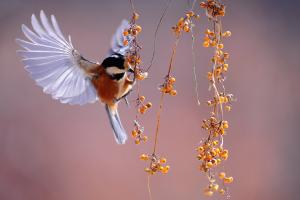
Source: Pexels
Sometimes photographers are called ‘toggers’, both in a neutral and in a derogatory way. Therefore, it is best to avoid this term. Many photographers travel with a European tour operator. BirdQuest and Rockjumper are examples of tour operators targeting photographers.
Listers and photographers can best be put in different tour groups, as their interests are very different.
- Get in touch with local bird clubs and magazines in European source countries to advertise. Examples of local bird clubs are the British Birdspot magazine , the Dutch Vogelbescherming magazine , the Swedish STOF magazine , and the Spanish La Chiricoca
- Get in touch with other local tour operators to collaborate on setting up activities besides birdwatching, for enthusiastic and casual birders. This way you can provide a truly unique experience for birding tourists. Mountain biking, kayaking, or driving safaris, or setting up a campfire and roasting marshmallows are examples of such activities.
- Make all activities for hardcore birdwatchers secondary to birdwatching. Offer dusk and dawn tours so they have a higher chance to spot the birds they came for. Flexibility around mealtimes is also important, as watching birds always is the top priority. Make birdwatching your specialisation, because this target group is not interested in side activities. Put your effort into high-quality birdwatching tours and information, instead of high-end accommodation or side activities
- Set up hides to accommodate photographers in their efforts to take good shots.
- Provide information on which birds tourists can find at your destination, and include it in your marketing strategy. Posting it on your website and social media, or presenting it at bird fairs will show potential tourists what makes your destination stand out. Some (hardcore) birders will travel very far to see unique species, but casual and enthusiastic birders will find rare species most interesting as well.
3. Which European countries offer most opportunities for birdwatching tourism?
The most important European source markets for birdwatching tourism in terms of market size are the United Kingdom, the Netherlands, Germany and Sweden. Many birdwatchers in these countries are involved in local or national bird conservation organisations. Italy, Spain, and Portugal are also European source markets for birdwatching tourism, but far less so than the first-mentioned countries in terms of market size.
The preferences per European country for birdwatching tourism are similar across the most important source countries, especially for hardcore birders. Most birdwatchers from the top 4 European source countries speak English well.
The United Kingdom
The United Kingdom is by far the biggest European source market for birdwatching. Many British people are interested in birdwatching and their number continues to increase every year. The Royal Society for the Protection of Birds is the biggest national bird organisation, with around one million members. Of all European countries, the United Kingdom has the highest number of tour operators that organise birdwatching trips.
The United Kingdom also has the highest number of birders of all types: casual, enthusiastic, and hardcore. Many Brits go outdoors to see birds or feed the birds that come into their garden. This means that birdwatching activities might be interesting for them when travelling internationally as well. Most British birdwatchers book with a tour operator from the United Kingdom.
In 2020, the average holiday budget in the UK €2,108, which is very high compared to the other European countries.
The Netherlands
Just like most UK birdwatchers, most birdwatchers in the Netherlands are also interested in nature and other wildlife besides birdwatching. The Netherlands has a relatively large number of birdwatchers who keep a list of the birds they aim to spot. De Vogelbescherming is a bird conservation organisation with 140,000 members in the Netherlands.
In general, Dutch tourists generally prefer active holidays that allow them to enjoy birdwatching and also be physically active. Although they have generous budgets, they are generally considered price-conscious. Their communication style is very direct. Dutch tourists are often good English speakers, and some speak German and French as well.
Germans usually go on organised trips and prepare well before their travels. They generally book their trips online. Although they prefer less active holidays in comparison to the Dutch, many will enjoy hiking in nature. German tourists generally do not like uncertainty. They tend to read a lot before visiting a place and are, like most Europeans, quite direct in their communication.
Germans are dedicated travellers and enjoy going on holidays a lot. Out of all European tourists, Germans spend the most money during international travel . 74% of Germans go abroad for holidays and over 50% of German travellers book activities through a tour operator or online travel agency.
German tourists enjoy spending their holidays in warm and sunny countries. In 2018, 5% of German international travellers travelled to Africa for their holidays, while 25% travelled to Asia or the Asia Pacific region and 15% travelled to the Americas. The average German budget for international travel in 2020 was €1,583 per trip.
BirdLife’s German partner Naturschutzbund Deutschland (NABU) was originally founded as a bird conservation organisation but has since broadened its scope to wildlife more generally. It has 445,000 members.
Swedish birdwatchers are especially interested in birdwatching on an academic level, as their educational standards are high and that often reflects on their personal interests as well. As such, their demand for educational tours and services while birdwatching is likely to be high. BirdLife Sweden is the national bird conservation organisation and has around 16,600 members.
Italy and Spain
Italy and Spain are important birdwatching destinations, which has stimulated birdwatching as a hobby for people in these countries. Spanish and Italian birdwatching guides also look for more knowledge and sometimes travel to other countries to do birdwatching. The Italian Lipu and the Spanish SEO Birdlife are the respective birdwatching conservation organisations.
Italian and Spanish tourists mostly book their trips via tour operators instead of online, compared to tourists from the other countries in the top 6. Also, they have a higher preference for information in their own language, because they often don’t speak English as well.
* The German NABU also has members interested in different wildlife
- Target the United Kingdom via British tour operators if your aim is to enter the largest European source market for birdwatching tourism, especially if there is little competition at your destination. As (especially hardcore) birders are experienced travellers, they will be willing to travel to your destination if it offers interesting bird species.
- Target specialised European tour operators with a clear and appealing offering. Fatbirder offers a list of tour operators offering birdwatching tours . Also consult our tips for doing business with European tourism buyers to read about how to contact European buyers.
- Make sure there are no language and spelling errors in the English text on your website and social media. European tourists find it easier to trust tour operators that provide information in correct English. Get in touch with a native speaker for professional English translations. French translation is also important when targeting French tourists, because French tourists generally prefer to read and speak French.
- Provide a list of translated bird names for birders that are not familiar with the bird names in English or your native language. Most Europeans speak English well, but their knowledge of bird names might be limited. This is especially true for casual birders.
- Get in touch with European birders and local guides knowledgeable about birds to set up an effective way of marketing your tours, for example via LinkedIn. Enthusiastic and hardcore birders are mostly very loyal and tend to stick with the same tour operators or guides.
4. Which trends offer opportunities in the European birdwatching tourism market?
Younger travellers engage in birding.
Birdwatchers are usually elderly people, but the age range of birders is getting broader. Adults, younger adults, and sometimes children are becoming more interested in birdwatching and their number is going to increase in the years to come. As a result, the market is changing. Younger generations are often inspired by online sources, and care more about sustainable choices and biodiversity.
Because they are fitter and generally care more about their health, younger birders also like to be physically active. Therefore, trips including longer hikes are more interesting for this target group. Just like hardcore birders, generations Y and Z care less about luxurious accommodations. More information about this and other trends can be found in our study on trends in tourism .
Birders use online tools for birding
The use of online tools is becoming more and more popular, both before and during travel. Fatbirder offers a huge amount of information on birdwatching, birding and bird travel worldwide. Another popular website is eBird , which is a website where bird sightings can be recorded. This contributes to conservation decisions and academic research related to birds and their environment.
eBird also shows birders interested in travelling internationally where to spot specific bird species. They can look up recent sightings and this can determine their travel destination. Local tour operators can communicate local sightings to birdwatchers on this platform. eBird is especially interesting for hardcore birders. It also has an app-version with lists for birders to use when travelling to a specific destination.
There are more apps available designed for birding. For instance, apps to keep track of lists ( Bird Journal ), identifying birds through pictures or sounds ( Merlin Bird ID ), or bird finding guides that help birders find local or rare birds ( BirdsEye Hotspot ).
Photographing birds is becoming more popular
Wildlife and birdwatching photography have become increasingly popular among tourists. This trend is largely driven by the decreased prices of high-quality cameras. Taking pictures of birds has become a trend within birdwatching tourism specifically. Tropical Birding is a tour operator that organises various ‘Birding with camera’ tours specifically for birdwatchers interested in getting the perfect picture.
Birdwatchers care about sustainable birdwatching
European birdwatchers care about preserving the natural habitat of the birds they want to see. Deliberately causing birds to fly away ( flushing ) is definitely a no-go for most Europeans. Observing nature without interfering with the bird or its habitat is one of the Ethical Birdwatching Guidelines .
Therefore, managing the natural environment to accommodate the birds is important. Providing safe nesting areas is an example of how to make sure birds feel safe and stay. Making sure domesticated animals, like cats, do not try and catch the birds is also important.
Also, they find it important that the money they spend at their destination gets reinvested in local communities and the conservation of the local environment. That way, they feel that they are contributing to the economy and social welfare of the local communities and help to preserve the environment.
Sam Veasna Conservation Tours is an example of public/private collaboration where the local indigenous community manages birdwatching tourism and supports breeding of endangered birds. In return, they receive government funding to uphold their activities and sustain themselves.
Nurgi Birding Ethiopia provides packaged and personal birdwatching trips with knowledgeable guides in Ethiopia. Part of the money they generate from tourism gets reinvested in conserving the Abyssinian Woodpecker.
- Learn about the opportunities in the European tourism market for Generation Y travel if you are still mainly targeting baby boomers and looking for opportunities for growth.
Get in touch with local wildlife organisations to ask for their expertise on how to manage the animals’ habitat in a sustainable way while also taking the wishes of tourists into account. African Bird Club is a bird conservation organisation that promotes conservation, provides resources and is interested in promoting similar regional initiatives. Oriental Birdclub does the same in the Southeast Asia region. Neotropical Birdclub does this for the whole South and Middle America region and the Caribbean.
Share bird names that you or tourists have spotted while on tour with you. This way birders know what they can expect on your tours. It is also important, however, to manage tourists’ expectations by communicating with them that birds will not always show themselves.
Educate birders to not feed, touch or harm the birds by, for example, turning on the camera flash. Making sure birds can be photographed without their habitat being disturbed is key.
This study was carried out on behalf of CBI by Molgo and ETFI .
Please review our market information disclaimer .
Enter search terms to find market research
Do you have questions about this research?
Ask your question
With more than a million people belonging to our main British conservation charity, the RSPB, interest in birds and wildlife are important to many people. We love to travel, and whether you are an obsessive birder or just someone who wants to see wildlife in its natural setting, the demand for ecotourism is likely to continue increasing in future years. There are many opportunities to provide tourism products for this market, but it is important to understand the expectations of travellers. The temptation to over-promise in the hope of a short-term gain is one of the greatest risks in tourism. Being realistic about what you can provide and then providing it well are key to a longer-term business plan. Anything that helps tourism providers to understand the expectations of travellers is to be welcomed. While carbon emissions do harm the global environment to a small degree, I believe that the benefits that ecotourism bring are far greater – both in involving local communities with their local wildlife, and making people care more about the places that they visit. Keith Betton, global birder, author and former Head of Corporate Affairs at ABTA, the Association of British Travel Agents
Nature-based tourism is one of the fastest growing tourism sectors, with a diverse array of interests and disciplines. The great thing about birding is that it is almost always available, whether in your own city or across the world. I picked up my first pair of binoculars at age four and have continued to explore nature ever since. The birding community plays a vital role in the ecotourism industry, often pioneering the development of new tourism destinations, encouraging community engagement and insisting on well-developed guiding skills from local guides. It is also one of the most particular groups of tourists with good knowledge, passion and time spent investigating exactly where to go and what to spend. Positive sustainable tourism is critical for both local economies and the long-term protection of our natural areas and should be both well managed and encouraged. Simon Collier, sustainable tourism expert, guide and trainer
Webinar recording
16 June 2021
Related research
- What is the demand for outbound tourism on the European market?
- What trends offer opportunities or pose threats on the European outbound tourism market?
- What are the requirements for tourism services in the European market?
- (opens in a new tab) Twitter
- (opens in a new tab) Facebook
- (opens in a new tab) LinkedIn
- Search Please fill out this field.
- Manage Your Subscription
- Give a Gift Subscription
- Newsletters
- Sweepstakes
America’s “Biggest, Longest, And Wildest Bird-Watching Tournament” Kicks Off This Month In Texas
Hurry! Registration ends today!
:max_bytes(150000):strip_icc():format(webp)/meghan-overdeep-headshot-b15adc0b06964a1d901eaca7f88b5165.jpg)
Jeff R Clow/Getty Images
Calling all birders !
The nation’s “biggest, longest, and wildest bird-watching tournament” is just two weeks away and time is running out to register.
More than a thousand bird enthusiasts will soon flock to the coasts, forests, prairies, and mountains of Texas to compete in the Great Texas Birding Classic , sponsored by the Texas Parks and Wildlife Department.
This statewide tournament invites participants to document the different species of birds migrating through the Lone Star State from April 15 to May 15. Competitors can choose from a variety of categories to test their birding chops, participating for as little as half a day or as long as a week.
“The Birding Classic is a wonderful opportunity for bird watching enthusiasts and all nature lovers to gather with family and friends to see how many bird species they can spot in a few hours, a full day, or even a few days in a row,” Shelly Plante, nature tourism manager for the Texas Parks and Wildlife Department , said in a statement. “This is a fun event that anyone, regardless of their age or ability, will enjoy.”
Participants can form a team and compete in categories like the Big Sit!, in which birders must remain within a 50-foot-diameter circle to count their birds. Other categories include a sunrise-to-noon event, youth-only tournaments, a human-powered contest, and one tournament held entirely within Texas State Parks.
“On top of all the birds we saw, there was also a mama and baby javelina, desert cottontails, and aoudad,” Cassie Cox, member of team Girl Moss who birded Hueco Tanks State Park and Historic Site as part of the State Park Tournament, said in a news release. “We all enjoyed getting out of the office and away from our to-do lists.”
Registration fees and team sponsorships raise money for habitat conservation, restoration, and enhancement grants throughout the state, “helping preserve critical bird habitat and support nature tourism.” Last year, the tournament raised $47,000 for conservation grants. In the 28 years it's been running, the Great Texas Birding Classic has awarded conservation grants totaling $1,163,000.
To register online and learn more about the tournament, visit BirdingClassic.org. But hurry: registration closes April 1, 2024.
Upgrade Internet Explorer or install a modern browser , or contact your system administrator.
- Purchase Park Passport
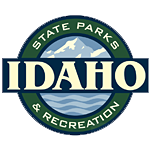
- Find a Park

- Ashton to Tetonia Trail
- Bruneau Dunes
- Castle Rocks
- City of Rocks
- Coeur d’Alene Parkway
- Coeur d'Alene's Old Mission
- Eagle Island
- Henrys Lake
- Lake Cascade
- Lake Walcott
- Land of the Yankee Fork
- Massacre Rocks
- Priest Lake
- Thousand Springs
- Three Island Crossing
- Trail of the Coeur d’Alenes
- Winchester Lake
- ATVs, UTVs, & Motorbikes
Bird Watching
- Cross Country (XC) Skiing
- Experience Idaho Backpacks
- First Time Adventure
- Hard Path Trail
- Horseshoe Pits
- Junior Ranger
- Loaner Fishing Rods
- Paddlesports
- Playgrounds
- Sandboarding
- Snowmobiling
- Snowshoeing
- Volleyball Area
- Volunteering
- Registration & Permits
- Contact Us: Info & Hours
- Development Projects
- Donate to Parks & Recreation
- Employment at IDPR
- Grants & Funding
- The Idaho Park & Recreation Board
- Idaho Recreation & Tourism Initiative
- Permits & Public Records
- News Releases
- Meeting Agendas & Public Notices
Excellent birding can be found in many of Idaho’s State Parks.
- The Mountain Bluebird is Idaho’s state bird.
- There are 119 species of birds in Idaho that are neotropical migratory birds.
- The largest nesting colony of Western Grebes in Idaho is on Lake Cascade.
- Western Grebes will nest on the Snake River, Massacre Rocks State Park is one example.
- Harriman State Park is one of the best sites in Idaho to see Trumpeter Swans.
- 409 species of birds have been recorded in Idaho.
- A new species of birdlisted in 2017, the Cassia Crossbill is found only in southern Idaho in lodgepole pine forests in the South Hills and Albion Mountains. It is a possibility at City of Rocks National Reserve/Castle Rocks State Park.
- Lake Walcott State Park and Bear Lake State Park are both located next to National Wildlife Refuges with abundant birdlife.
The Idaho Department of Parks and Recreation has five sites listed as Important Bird Areas by the National Audubon Society:
- City of Rocks National Reserve
- Harriman State Park
- Henrys Lake State Park
- Heyburn State Park
- Lake Cascade State Park
- Eagle Island State Park
Idaho Birding Trail
Visit these idaho state parks for exceptional birding opportunities:.
- Bear Lake State Park
- Bruneau Dunes State Park
- Castle Rocks State Park
- Coeur d’Alene Parkway
- Coeur d’Alene’s Old Mission State Park
- Dworshak State Park
- Farragut State Park
- Hells Gate State Park
- Lake Walcott State Park
- Land of the Yankee Fork State Park
- Lucky Peak State Park
- Massacre Rocks State Park
- McCroskey State Park
- Ponderosa State Park
- Priest Lake State Park
- Round Lake State Park
- Thousand Springs State Park
- Three Island Crossing State Park
- Trail of the Coeur d’Alenes
- Winchester Lake State Park
Upcoming Events
See All Events
We're sorry, some parts of the TPWD website don't work properly without JavaScript enabled.
World Birding Center Birding Tours
All ages and skill-levels are welcome on this two-hour tour of the park, finding as many species of birds as possible, especially the 30 that are termed Valley Specialties, followed by an optional birding presentation on Sundays.
Join us on unforgettable avian adventure. With over 350 species of birds identified within our park and many of the Valley specialty birds you just can't see outside of the Rio Grande Valley, our guided bird tours are a must for everyone. Whether you are new to birding and ready to learn your new outdoor obsession or if you are a seasoned and traveled expert with years of experience, this birding tour is sure to be an amazing time.
From our famous birding deck that has a record of 115 bird species in a day from one spot overlooking the beautiful wetlands, to the Tropical Area that has Green Jays, Great Kiskadees, Clay-colored Thrushes and has attracted rarities like the Elegant Trogon, Rose-throated Becard, White-throated Thrush, and Crimson-collared Grosbeak.
Free with park admission ($5 for adults, children free), all ages and all skill levels, no pets please. Family-friendly. Meet on the deck just outside the Visitor Center Park Store.
All Dates for This Event
- 8:30a to 10:30a Sat, April 06, 2024
- 8:30a to 10:30a Sun, April 07, 2024
- 8:30a to 10:30a Sat, April 13, 2024
- 8:30a to 10:30a Sun, April 14, 2024
- 8:30a to 10:30a Sat, April 20, 2024
- 8:30a to 10:30a Sun, April 21, 2024
- 8:30a to 10:30a Sat, April 27, 2024
- 8:30a to 10:30a Sun, April 28, 2024
- 8:30a to 10:30a Sat, May 04, 2024
- 8:30a to 10:30a Sun, May 05, 2024
- 8:30a to 10:30a Sat, May 11, 2024
- 8:30a to 10:30a Sun, May 12, 2024
- 8:30a to 10:30a Sat, May 18, 2024
- 8:30a to 10:30a Sun, May 19, 2024
- 8:30a to 10:30a Sat, May 25, 2024
- 8:30a to 10:30a Sun, May 26, 2024
- 8:30a to 10:30a Sat, June 01, 2024
- 8:30a to 10:30a Sun, June 02, 2024
- 8:30a to 10:30a Sat, June 08, 2024
- 8:30a to 10:30a Sun, June 09, 2024
- 8:30a to 10:30a Sat, June 15, 2024
- 8:30a to 10:30a Sun, June 16, 2024
- 8:30a to 10:30a Sat, June 22, 2024
- 8:30a to 10:30a Sun, June 23, 2024
- 8:30a to 10:30a Sat, June 29, 2024
- 8:30a to 10:30a Sun, June 30, 2024
- 8:30a to 10:30a Sat, July 06, 2024
- 8:30a to 10:30a Sun, July 07, 2024
- 8:30a to 10:30a Sat, July 13, 2024
- 8:30a to 10:30a Sun, July 14, 2024
- 8:30a to 10:30a Sat, July 20, 2024
- 8:30a to 10:30a Sun, July 21, 2024
- 8:30a to 10:30a Sat, July 27, 2024
- 8:30a to 10:30a Sun, July 28, 2024
- 8:30a to 10:30a Sat, August 03, 2024
- 8:30a to 10:30a Sun, August 04, 2024
- 8:30a to 10:30a Sat, August 10, 2024
- 8:30a to 10:30a Sun, August 11, 2024
- 8:30a to 10:30a Sat, August 17, 2024
- 8:30a to 10:30a Sun, August 18, 2024
- 8:30a to 10:30a Sat, August 24, 2024
- 8:30a to 10:30a Sun, August 25, 2024
- 8:30a to 10:30a Sat, August 31, 2024

IMAGES
VIDEO
COMMENTS
The hotel also boosts of night frog walking tours. Ideal for nature lovers and birders. Finca Luna Nueva Lodge - Easy drive from cloud forests with local guides that can spot birds from afar. Sol de Minca Eco Lodge - Amazing eco lodge in the lovely birding paradise of Minca, Colombia.
World's Best Destinations for Bird-Watching. 1 of 10. South Georgia Island Half a million king penguins, each standing three feet tall, pack shoulder to shoulder in mesmerizing colonies on this ...
BIRDING TOURS WORLDWIDE. Welcome to Birding Ecotours! Here we will present to you some of the world's most spectacular birding tours around the world. Our trips are for small groups of only 6-8 participants. Quality is of paramount importance to us; we prefer to use superior accommodation (where available at the top birding sites) and vehicles.
Birdwatching Moscow. We are a team of passionate ornithologists and birdwatchers from Moscow. Our goal is raise attention to bird conservation in cities as well as in nature. For this reason we educate local people and provide birding walks and trips for tourists around the world.
Bird Watching & Bird Touring Vacation Destinations By National Geographic Expeditions. The Best Bird Watching Vacation Destinations And Itineraries. Visit Iconic Vacation Destinations For Bird ...
International Birding Tours. Go birding with Audubon-trained guides to conserve important bird habitat and support local communities. Ecotourism in Filandia, Quindío, Colombia. Audubon has teamed up with partners in Latin America to develop a series of ecotourism trips that are geared towards birders to conserve the habitats that birds need ...
Eagle-Eye Tours birdwatching trips, cruises and expeditions visit amazing & exotic destinations worldwide. Travel with exceptional guides around the world on your next birding and eco tour adventure. View rare wildlife and birds and experience local cultures, food and accommodations!
Audubon promotes conservation in Latin America and the Caribbean by creating grassroots economic opportunities and incentives through bird-based tourism. Here are some of the ways the program has been succesful so far. Building infrastructure and community support: 285 guides trained at basic level; 73 at advanced level.
I would absolutely recommend to anyone visiting Moscow and interested in birding the region. Read more. Written January 24, 2020. ... I was going to Moscow as a tourist and setup a day of birding with Bird watching Moscow. Everything went was nicely arranged and went perfectly. My guide met me at the designated time; 6:30 AM at the hotel.
Birding Smolensk If you need to visit Smolensk on business there are several interesting areas to bird.Smolensk Lake (about a mile to the south of the city is a large lake approx 1Km x 2Km. There is a large power station situated on the northern shore. To the south of the lake is a large reed bed, and an adjacent, smaller, more vegitated lake ...
These crowd-pleasing North American destinations are as perfect for bird-watching as they are for a good old-fashioned vacation. By Alexandra Marvar Published on August 27, 2023
Exploring Bird-Watching Hotspots Around the World: While bird watching can be enjoyed virtually anywhere, certain destinations stand out as veritable hotspots for avian enthusiasts. Let's explore some of the most remarkable locations across the globe, renowned for their rich birdlife and captivating landscapes: 1. The Pantanal, Brazil
Book Your Own Birding Trip. Plan your own international birding trip with these suggested itineraries from Audubon partners. In collaboration with tour guide operator partners, the National Audubon Society is proud to offer suggested travel itineraries throughout the Caribbean and Latin America. These beautiful trips are packed with tremendous ...
1. ird-based tourism is growing rapidly, including to developing countries.According to one study, "Bird watching is reported as being the fastest growing outdoor activity in America,"1 while another notes, "An increasing number of birdwatchers are traveling to long haul destinations to spot new birds that cannot be seen in their own country or region."2 To capitalize on this
As a broader nature tourism niche, bird-watching forms a specialist market. As a result, it has traditionally been viewed as a homogenous group of people obsessed with seeing as many new species as possible. Despite this perception, more comprehensive research has uncovered that these tourists consists of a diverse population, with participants ...
ABA Travel. When you travel with the American Birding Association, you help build a better future for birds, birders, and birding. Our thoughtfully designed program combines great field birding, amazing destinations, and cultural immersion, while visibly supporting local projects and communities. We help the birding world effectively work ...
Determined birders are ornithological junkies, compelled to travel long distances by their love of spotting a rare species. In fact, they are part of a growing multi-billion dollar ecotourism ...
You can read recent WINGS e-mail and print newletters and subscribe to our newsletter here. Worldwide birding tour company based in Tucson, Arizona. WINGS Birding Tours has more than 40 years of birdwatching experience and offers travel packages, tour itineraries, and newsletters.
1. Harlingen, Texas. The southern tip of Texas is tops for birding, particularly when Harlingen hosts the Rio Grande Valley Birding Festival during fall's migration season. A good day of birding on the East Coast might mean spotting 50 to 60 species. In Harlingen, you might spot nearly 100 species after a few hours.
Birding tours to the best birding hotspots in North America! Including Texas, Arizona, Florida, California, and Minnesota. Let's go bird! Small group and custom-designed birding adventures in the United States and Canada - and the Galapagos! Bird Treks. Toggle Navigation. Home; Destination . Eastern USA; Central USA;
Birding tourism, like many wildlife tourism activities, requires interaction between a visitor and a local community and depends on the ecological integrity of a specific location to support the bird species that draw tourists to a particular place. Many of the places that draw birding tourism are also remote, requiring significant expenditures ...
Birdwatching is becoming increasingly popular among European tourists. The United Kingdom is the largest European source country for birdwatching tourism, followed by the Netherlands and Germany. Birdwatching tourism attracts experienced travellers and offers spacious destinations. Therefore, the expectation is that this niche market will recover relatively fast when COVID-19 restrictions ...
"The Birding Classic is a wonderful opportunity for bird watching enthusiasts and all nature lovers to gather with family and friends to see how many bird species they can spot in a few hours, a full day, or even a few days in a row," Shelly Plante, nature tourism manager for the Texas Parks and Wildlife Department, said in a statement."This is a fun event that anyone, regardless of ...
Excellent birding can be found in many of Idaho's State Parks. The Mountain Bluebird is Idaho's state bird. There are 119 species of birds in Idaho that are neotropical migratory birds. The largest nesting colony of Western Grebes in Idaho is on Lake Cascade. Western Grebes will nest on the Snake River, Massacre Rocks State Park is one example.
From our famous birding deck that has a record of 115 bird species in a day from one spot overlooking the beautiful wetlands, to the Tropical Area that has Green Jays, Great Kiskadees, Clay-colored Thrushes and has attracted rarities like the Elegant Trogon, Rose-throated Becard, White-throated Thrush, and Crimson-collared Grosbeak.